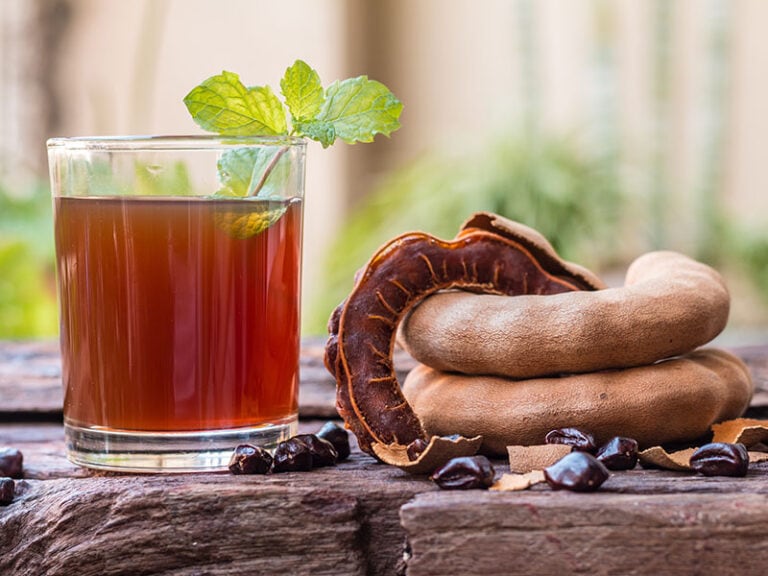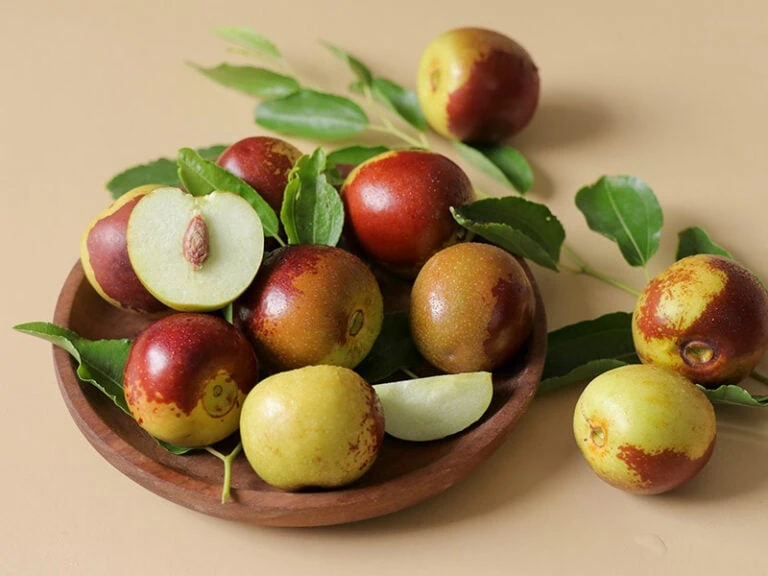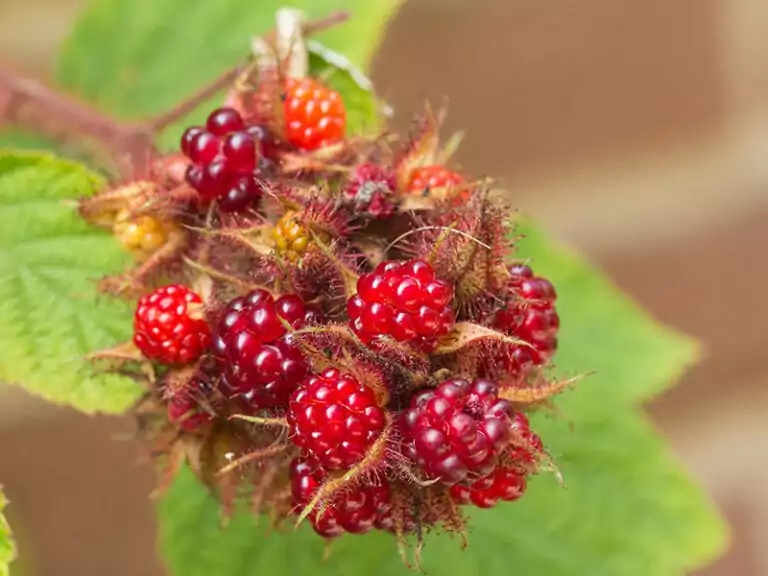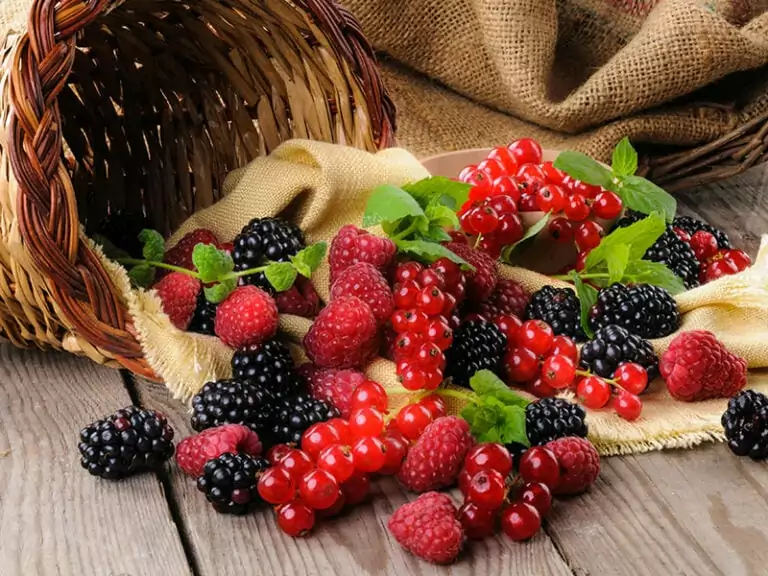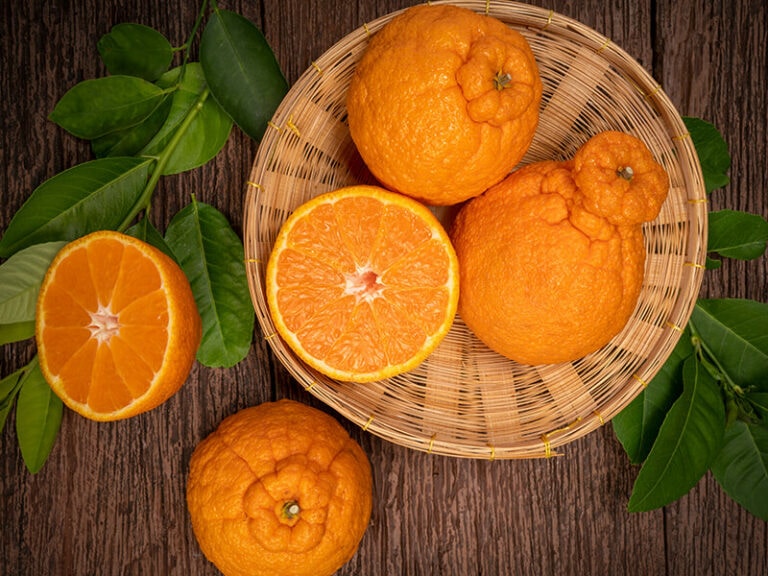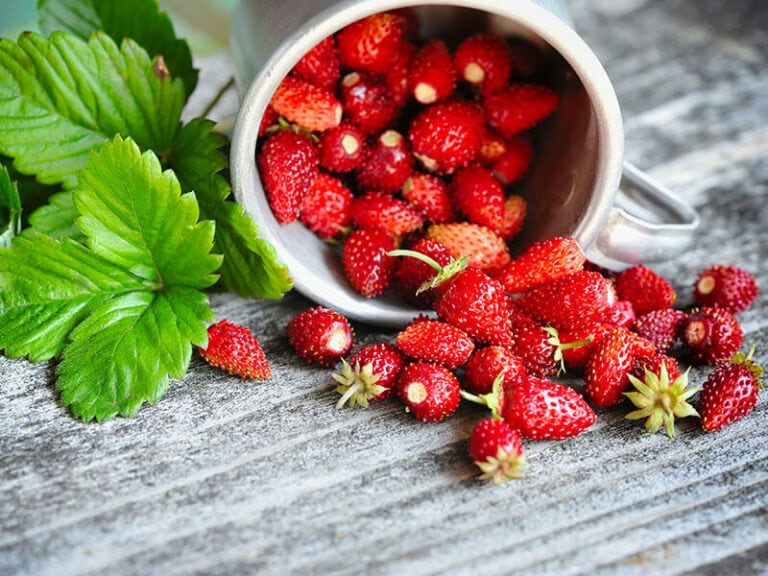There are many foods that start with the letter B. In this guide, I’ll especially delve into the fascinating world of B-beginning fruits, showcasing their diverse tastes and nutritional profiles to help you make the most of your fruit consumption.
By the end of this post, you’ll be well-versed in the taste sensations, health perks, and versatile culinary uses of these B-fruits. Integrating them into your diet will not only spice up your palate but also pave the way to a more wholesome and invigorating lifestyle.
So, why hesitate? Unleash your inner fruit explorer and embark on a mouthwatering B-fruit adventure today!
1. Wholesome B-Berries Around The World
Come and discover the vibrant world of B-berries, celebrated for their delightful flavors, vivid colors, and impressive health benefits.
1. Bilberry
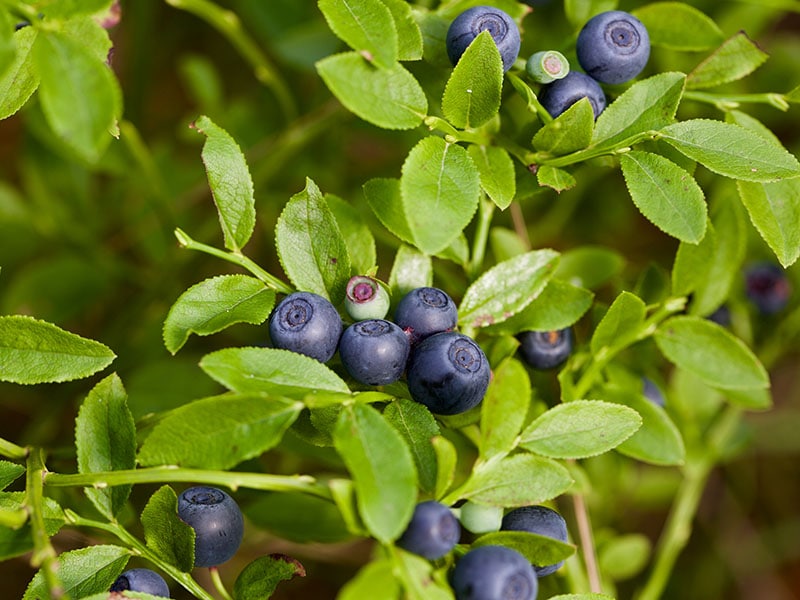
Bilberries are a delicious and nutritious fruit you might not know much about yet. These small, dark berries have a deep purple color and a round shape, similar in size to their close relative, the blueberry. The bilberry has smooth, thin skin that encases a juicy, soft interior.
However, bilberries don’t share the same flavor as blueberries. Some people find it too acidic to eat, but overall, its taste is much stronger than blueberries. That’s why it’d be better to use them to make pies rather than eat them raw.
Bilberries truly deliver a powerhouse of health benefits, brimming with antioxidants, vitamins, and minerals. They are particularly abundant in vitamin C, which bolsters a robust immune system, and anthocyanins, recognized for promoting heart health and enhancing vision
To savor bilberries at their peak, enjoy them during the summer months when they’re in season, guaranteeing the freshest and most flavorful berries.
These small yet mighty fruits are indigenous to regions spanning Northern Europe and Northern Asia, flourishing in the wild, particularly in cooler climates.
2. Blackberry
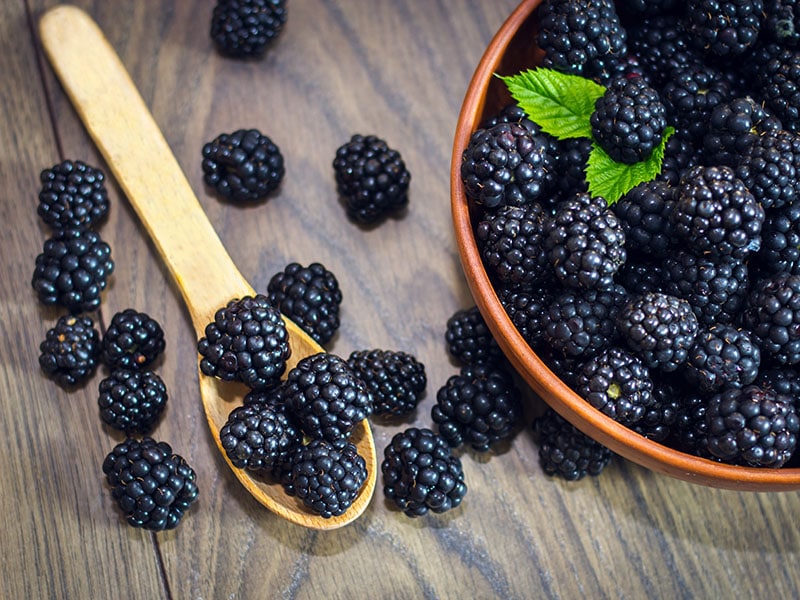
As you savor a juicy blackberry, you’ll notice its deep purple-black hue, often accompanied by a delightful sheen.
This delicious fruit, varying in size from about 0.5 to 1.5 inches, has a unique shape consisting of multiple small, plump drupelets. In reality, you’ll find that some differ slightly in color, size, or taste, but all are equally enjoyable.
When you bite into a blackberry, you’ll be greeted with a tender yet slightly firm texture bursting with flavor.
Blackberries, with their delightful blend of sweetness and tang, are ideal for a variety of dishes. Toss them into smoothies for a revitalizing drink or sprinkle them in salads for a lively burst of color and taste.
These juicy gems shine in pies and baked treats, where their unique fragrance adds scrumptiousness. But blackberries are more than just tasty; they’re packed with potent antioxidants, crucial vitamins, and essential minerals for overall health.
Summer months (June to August) mark the blackberry season, so you can anticipate their annual appearance. Cultivated for ages in diverse regions globally, blackberries are now cherished for their versatility, flavor, and healthful perks.
3. Blueberry
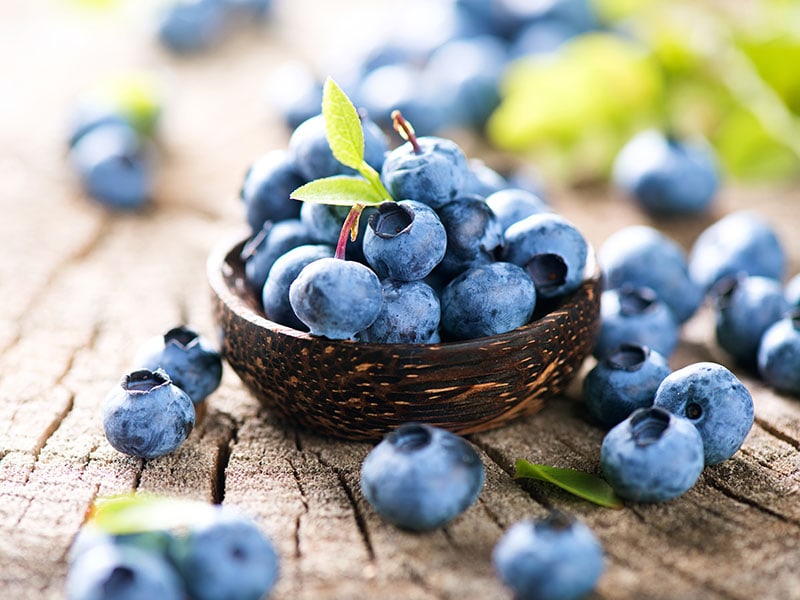
I’m here to share the wonders of blueberries with you, a delightful fruit that’s tasty and nutritious. These small, round berries have a vibrant blue color and smooth skin, typically measuring about a half-inch in diameter.
With their ideal mix of firmness and juiciness, blueberries are a joy to eat. Their flavor is a harmonious blend of sweet and mildly tart, enhanced by a gentle, fruity aroma. Numerous blueberry varieties offer subtle differences in taste, size, and appearance.
Blueberries boast impressive health benefits thanks to their high levels of antioxidants, vitamins, and minerals. They’re particularly rich in vitamins C and K, which support immune function and bone health.
Incorporate these gems into daily meals with smoothies, pies, salads, and more. Blueberries thrive in summer, so expect the freshest and tastiest berries then. These versatile fruits can be found across North America and Eurasia.
4. Boysenberry
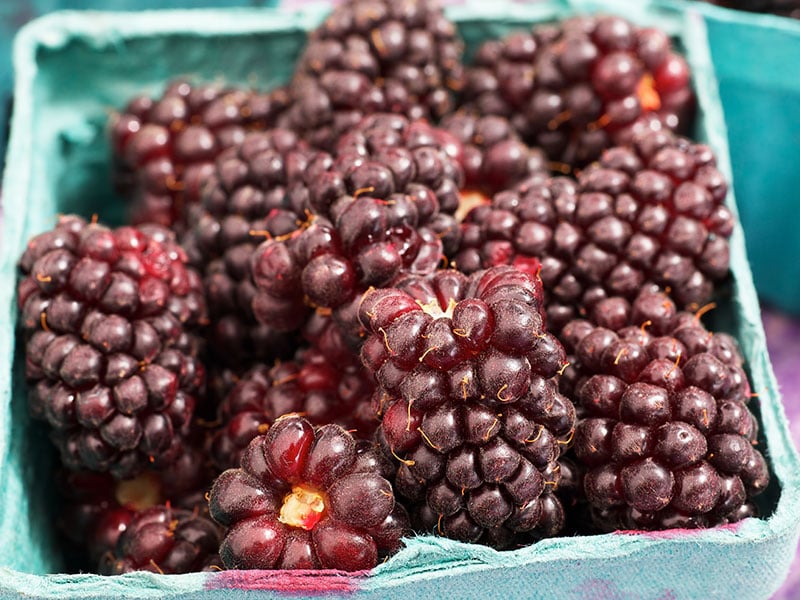
Boysenberries, with their deep maroon color and plump, slightly elongated shape, are truly a sight to behold.
Measuring about 1 to 2 inches in length, these berries cross between loganberries, raspberries, and blackberries. Thus, it has a similar color to blackberry and loganberry shape. Moreover, boysenberries can be traced back to California.
The smooth, very tender texture that bursts with juiciness makes every bite enjoyable. Also, the taste of boysenberries is sweet and tangy. More specifically, its taste is sweeter compared to blackberry but has a floral note of raspberry.
Therefore, they are perfect for various uses, such as in fruit salads, pies, or even blended into refreshing smoothies.
Boysenberries also offer numerous health benefits, too. They’re rich in antioxidants, vitamins, and minerals, contributing to a healthy diet.
Similar to the above berries, boysenberries are in season during the summer months, making it the perfect time to enjoy them at their peak freshness. Today, they’re cultivated in several regions, but boysenberries that are most commercially grown come from Oregon.
5. Black Raspberry
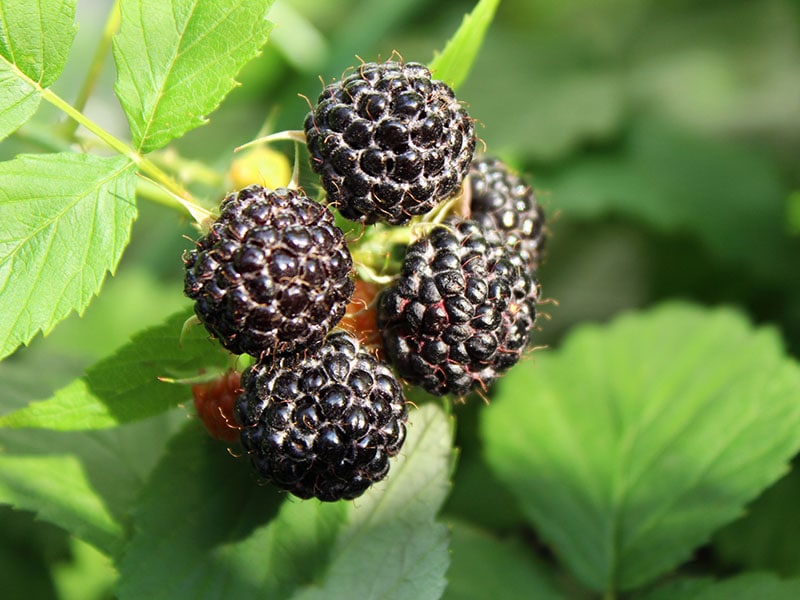
Native to North America, black raspberries have been cultivated for centuries. Now, they’re grown in various countries in the world, allowing more people to appreciate their flavor and health benefits.
Black raspberries are a feast for the eyes, thanks to their petite, round shape and rich blue-black color. Usually measuring 0.5 to 1 inch across, these berries offer a firm texture and an intriguing hollow center.
When you bite into a black raspberry, you’ll experience a delightful mix of sweetness and subtle tartness, with a touch of earthy undertones. These berries boast a more robust flavor compared to their red cousins.
They make delicious additions to pies, salads, and invigorating smoothies. People often use them to create purees or jams, too. Besides being tasty and nutritious, black raspberries and their leaves are used for medicinal purposes.
Though black raspberries may not boast the extensive diversity of other fruits, their remarkable traits set them apart. Regrettably, their fleeting season lasts a mere 2 to 3 weeks, occurring between the early and mid-summer months.
6. Brambles
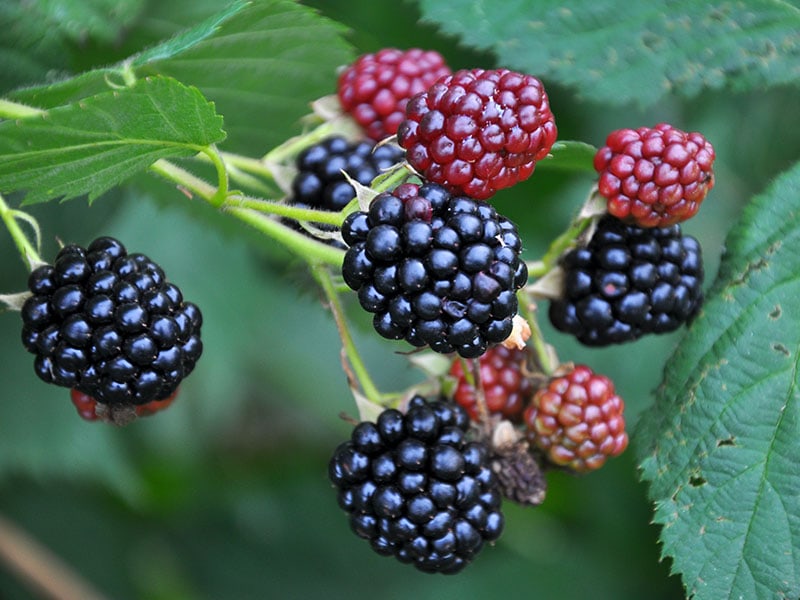
Bramble is a group of thorny plants that belong to the Rubus family, which also includes blackberries and raspberries.
They typically produce small, round, and juicy drupelets forming a larger aggregate fruit. The colors vary from deep red to dark purple, depending on the type of bramble and its ripeness.
The texture of brambles is a delightful combination of soft, juicy drupelets and a slightly rough exterior. Each bramble variety has its flavor profile, ranging from sweet to tart, often emitting a pleasant, fruity aroma.
Bramble blooms pink or white flowers during late spring and bears fruits during summer. These fruits thrive in diverse regions, with specific varieties indigenous to North America, Europe, and Asia.
As a food source, brambles offer a delightful taste experience alongside numerous health benefits.
Raspberries, blackberries, and other bramble fruits are rich in antioxidants, vitamins, and minerals, contributing to overall wellness. For instance, blackberries have abundant vitamin C and vitamin K, while raspberries are recognized for their manganese content.
7. Black Currant
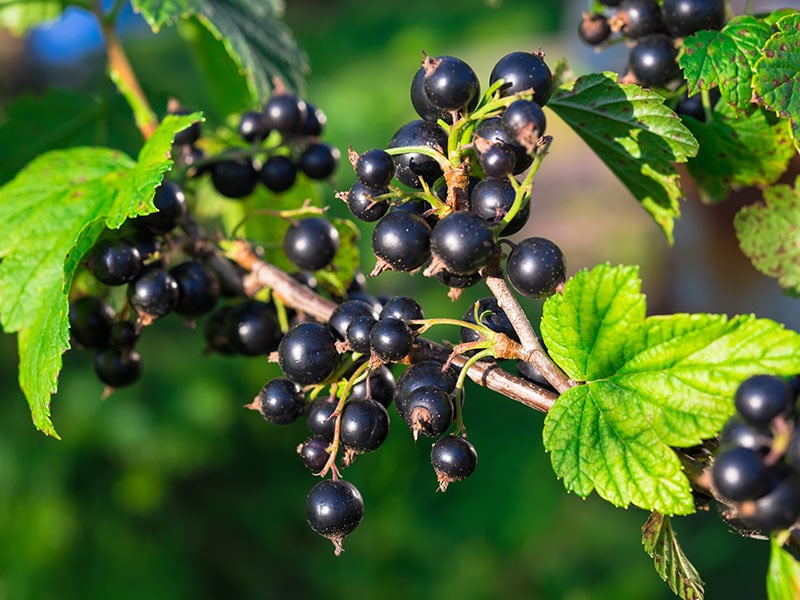
Black currants are small, dark purple fruits that capture attention with a glossy appearance. About the texture, these berries have a smooth, soft texture that reveals a pleasantly juicy interior.
The taste of black currants is unique, with a mix of grape and passion fruit flavors. Overall, they are tart berries with a strong hint of earthiness.
Their distinctive aroma and flavors make them a versatile ingredient for various recipes, such as jams, sauces, syrups, and beverages like cordials or wine.
In terms of nutrition, black currants are true powerhouses. They’re packed with antioxidants, vitamins, and minerals, contributing to a healthy diet.
The black currant plant’s worth extends beyond its fruit, as its seeds, skin, and leaves can be employed for various uses, such as crafting herbal teas.
Black currants are typically available during the summer, so you can enjoy them when they’re freshest.
Though originally native to Northern Europe and Northern Asia, black currants are not widely grown in the USA nowadays. The research shows that only 0.1% of Americans have tried this fruit before (1).
8. Bell Peppers
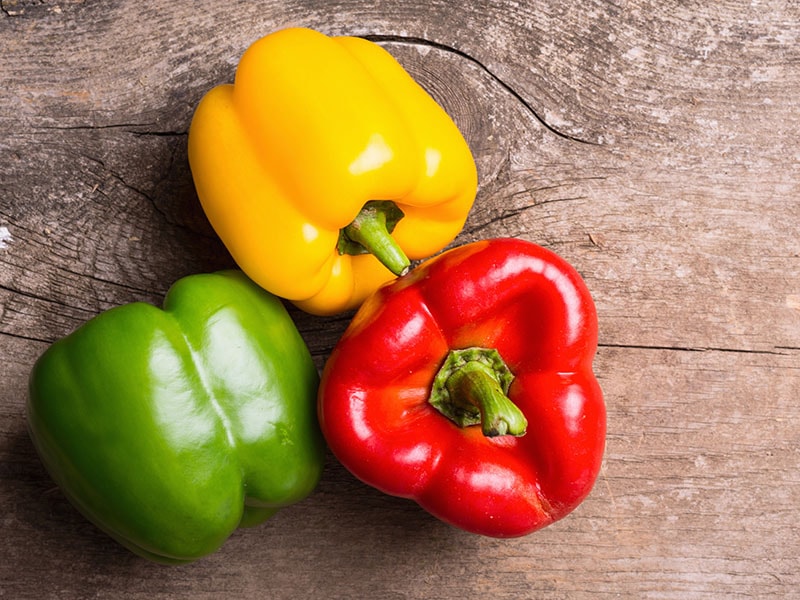
Bell peppers, aka sweet peppers or capsicums, are versatile and vibrant fruit/vegetable that can add color and flavor to any dish.
They come in various shapes and sizes, with the most common colors being green, red, yellow, and orange. Each color represents a different stage of ripeness (2), with green being the least ripe and red being the most.
Bell peppers have a firm and crisp texture, providing a pleasing crunch when bitten. The flavors of the flesh differ among varieties; red peppers are sweeter and not bitter, while green peppers have a grassy and mildly bitter taste.
Though their flavors differ subtly, all bell peppers have a shared sweetness, making them popular in various recipes, particularly savory dishes.
There are countless ways to savor bell peppers. Whether raw, grilled, roasted, or sautéed, they’re a key ingredient in various dishes such as salads, stir-fries, and stuffed peppers.
Bell peppers’ nutritional value is high yet low in calories. They are a rich source of vitamins K, C, potassium, thiamin, and more. Bell peppers are available year-round, but their peak season is typical during the summer and early fall.
2. How Many Exotic Fruits That Begin With The B Letter?
Let’s unveil the fascinating realm of exotic fruits that start with B that you might not hear of before.
9. Baobab
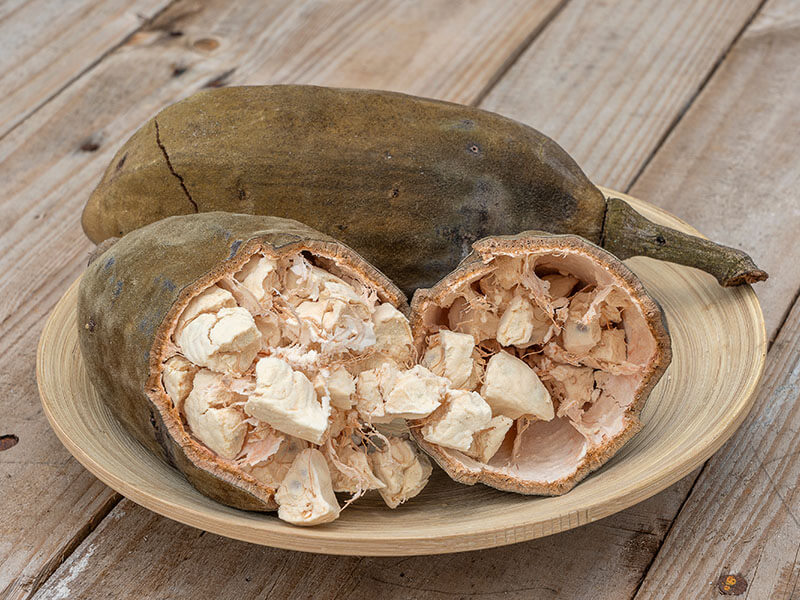
Native to Africa, the baobab tree has long been an essential part of local communities, not only for its fruit but also for its bark and leaves, which can be used for various purposes.
The baobab fruit is indeed an intriguing and unique addition to the world of fruits. With a round to oval shape and a hard, velvety shell, its appearance alone sets it apart from others.
When you crack open the baobab fruit, you’ll find a dried, powdery pulp surrounded by seeds, which have many uses.
Baobab’s taste is pleasantly tangy, with hints of sweetness and sourness. Many assume it has a taste of yogurt or lemon. Its flavor profile and slightly dry texture make it a versatile ingredient in smoothies, energy bars, baked goods, or even brews since it works as a fermenting element).
Baobab fruit has an impressive nutritional profile. Rich in antioxidants, vitamins, and minerals, this amazing superfruit is notably rich in vitamin C, fiber, and crucial minerals like potassium and magnesium. The leaves provide additional nutritional perks, including Pro-vitamin A and calcium.
A few distinct species of baobab trees primarily thrive in Africa, Madagascar, and Australia. The fruit is usually gathered during the dry season, as the trees conserve water during wet months to endure the drier periods.
10. Barberry
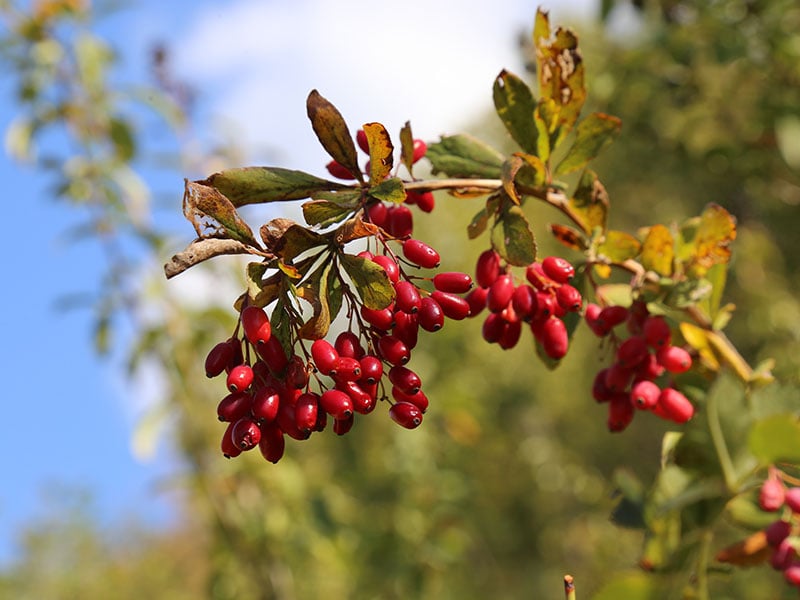
Barberry is a fascinating fruit that adds a pop of color and tanginess to your dishes. These small, elongated berries come in a vibrant red hue and are typically no larger than a grain of rice. The exterior of the fruit is smooth, and biting into it reveals a firm texture.
The taste of barberry is where it truly stands out. With a tangy flavor and a touch of sweetness, barberries bring excitement to various recipes, including rice, stuffing, granola, salads, and braises.
They also serve as a delightful garnish for baked treats like muffins, tarts, and pastries, while their extract is perfect for crafting jellies and jams.
Besides its culinary uses, barberries offer numerous health benefits, being rich in antioxidants, vitamins, and minerals. In Indian folk medicine, they are used to treat stomach upsets, diarrhea, or fever.
Several barberry varieties exist, with the European barberry being the most renowned. These fruits are commonly found in Europe, Central Asia, North Africa, and North America.
11. Blue Tongue Fruit
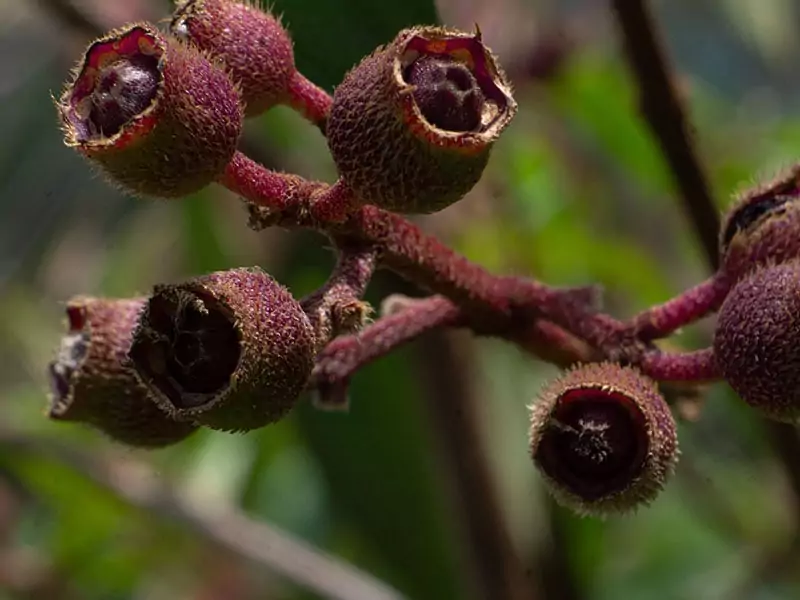
I discovered an exotic fruit gem called the blue tongue fruit, and I just had to share my findings with you. This fascinating fruit sports a weird appearance. They are small and pretty bumpy fruits that open up to reveal a purplish-black pulp.
When you eat this fruit, your tongue and mouth will turn a blue-purple color. And this is why people call it this name. Diving into the flavor profile, the blue tongue fruit is a delightful surprise with its sweet flavor.
Therefore, they are ideal for eating fresh, so you can pick and eat them directly after removing them from the shrub. And due to the color, blue tongue fruit is a fun fruit for kids.
In terms of seasonality, this fruit is most commonly found during spring and summer, although it may be available in some regions year-round. Its origins can be traced back to various regions, but you can find them growing wild in Australia.
12. Brazilian Nut
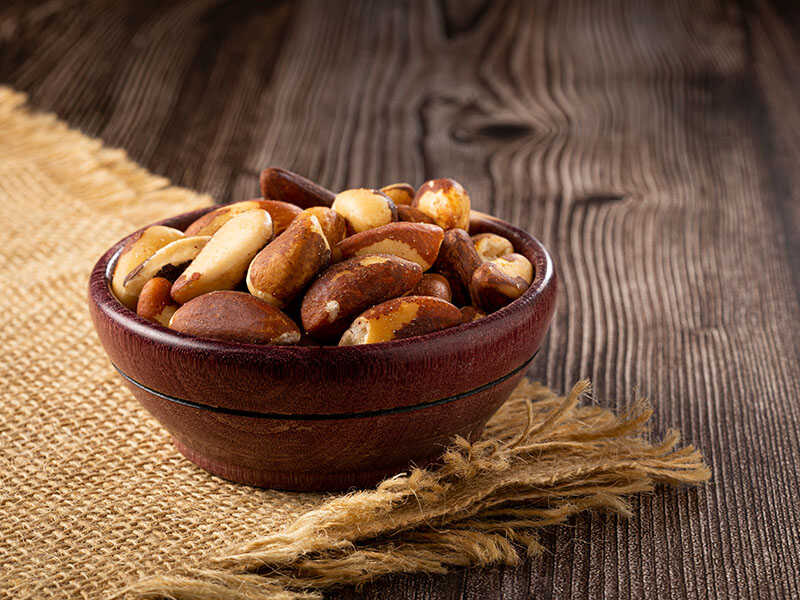
Originating from South America, Brazil nuts grow wild in the vast Amazon rainforest, with Brazil, Bolivia, and Peru as the primary producers. These nuts are unique, featuring a large, hard, triangular shell housing the edible, crescent-shaped seeds.
Their light brown color, firm texture, and rich, earthy taste with a hint of coconut make them a sought-after snack.
Bursting with nutritional benefits, Brazil nuts serve as an outstanding source of vitamins, minerals, and antioxidants. They are notably rich in selenium, a potent antioxidant that bolsters immune system health and safeguards against cellular damage.
Additionally, they provide healthy fats, fiber, and vital nutrients such as magnesium, copper, and zinc.
Enjoy these nutritious nuts (raw or roasted) or in various dishes, from salads and granolas to baked goods and desserts like cakes and brownies. Their natural oil can be extracted for culinary or skincare applications.
Although available year-round, Brazil nuts are mainly harvested during the Amazon Basin’s rainy season, which lasts from December to March.
3. B-named Fruits Grown In Tropical/Subtropical Climate
Here comes the enticing selection of tropical and subtropical fruits that start with B! With these examples, you will have a closer look at these B-named fruits.
13. Button Mangosteen
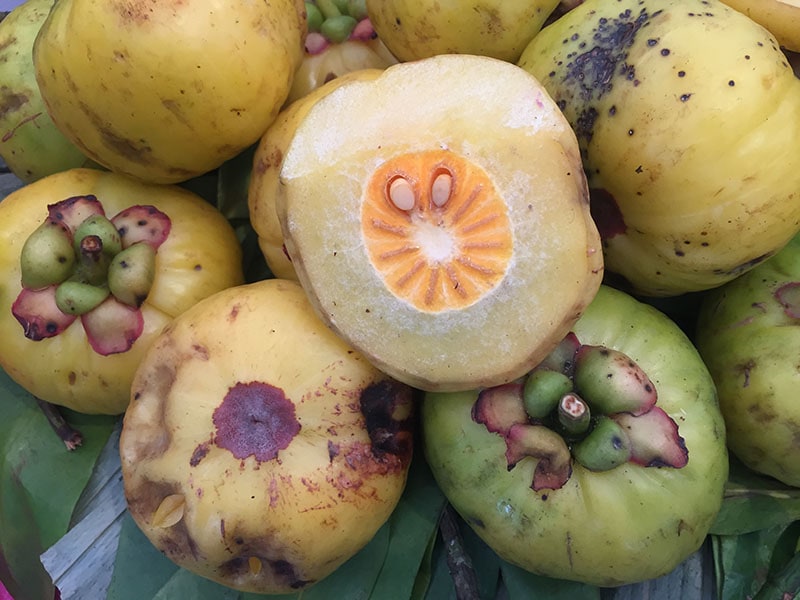
Let me introduce you to button mangosteen, a captivating Asian fruit worth exploring. More specifically, button mangosteen’s primarily grown in Southeast Asia. And they are native to Thailand and Malaysia.
It has a vibrant orange color, round shape, and petite size (4) – usually around 1 1/2 in diameter. The fruit’s outer skin is smooth, while the flesh is also orange with 2 (or more) big seeds.
The Button Mangosteen’s taste is a mesmerizing blend of sweet and sour flavors which taste similar to tangerine.
And accompanied by a pleasant, aromatic fragrance, this fruit is even more enticing to consume. Therefore, their taste is completely different compared to their relative- purple mangosteen.
14. Brush Cherry
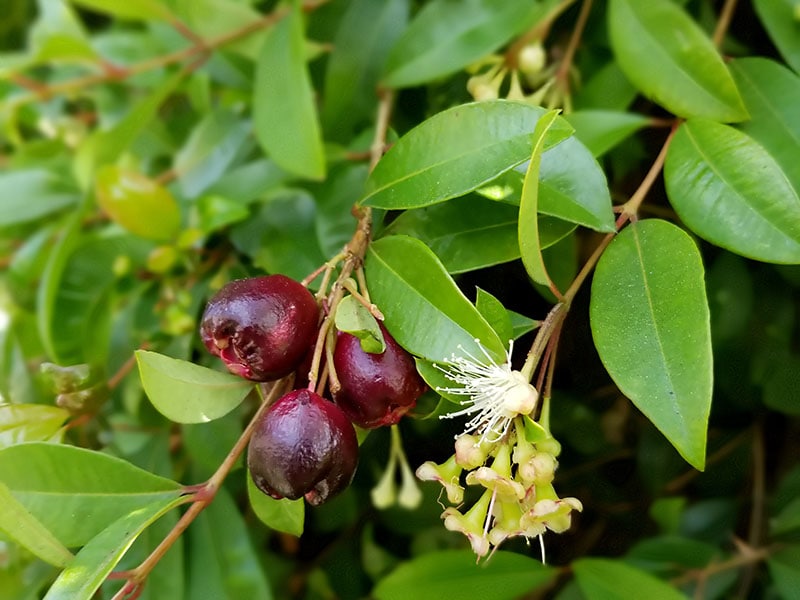
Originating from Australia and New Zealand, brush cherry is a small yet vibrant fruit that catches your eye with its striking appearance.
Its glossy, dark red or purple color contrasts beautifully with its round, elongated shape, and cherry-like size. When you pick one up, you’ll notice the smooth, firm texture that softens as the fruit ripens.
When you bite into a brush cherry, your taste buds will enjoy a gently sweet and a bit sour taste, along with a crispiness that reminds you of apples. Regarding its nutrition, brush cherries are high in vitamins A, C, and K.
Keep an eye out for their season. They normally flower in spring (with white puffy flowers) and produce fruit in autumn.
15. Bignay Fruit
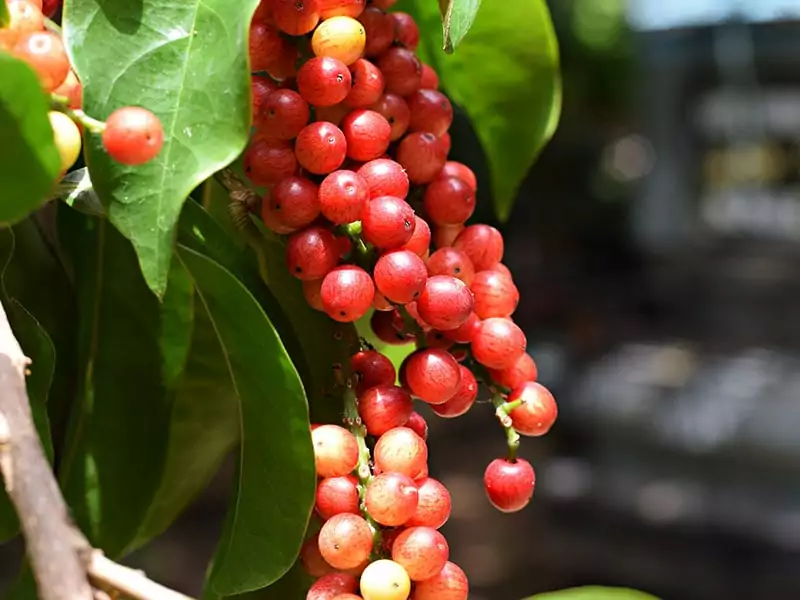
I can’t help but be captivated by the bignay fruit, a colorful gem native to Southeast Asia and northern Australia. It is also known as Queensland cherry.
This small, round, and shiny fruit grows in clusters, resembling vibrant red or dark purple pearls, each measuring around 0.3 to 0.5 inches in diameter. Their smooth, thin skin and sweet-tart taste make them super refreshing and energizing.
Rich in antioxidants, vitamins, minerals, and flavonoids, bignay fruit aids in reducing inflammation, supporting a robust immune system, and potentially preventing cancer. The fruit’s nutrients also contribute to its anti-aging properties.
Though the bignay fruit is mostly enjoyed fresh, it’s also used in various recipes. Unripe fruits are tangy, so they can be used as vinegar substitution in some cases. For fully ripened ones, they are ideal for adding to your drink or can be used to prepare syrup or brandy.
Don’t forget to explore the goodness hidden within the bignay’s leaves, which can be brewed into a soothing herbal tea.
16. Bilimbi Fruit
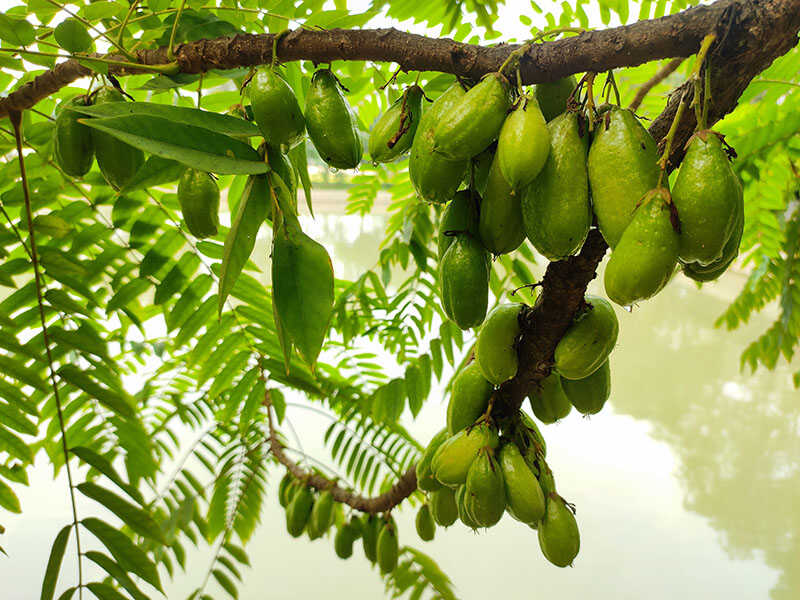
Another exotic and fascinating fruit is the bilimbi fruit, a tropical wonder originating from Southeast Asia, particularly Malaysia and Indonesia. Overall, bilimbi thrives in warm, tropical climates and plays a certain role in the culinary and cultural traditions of the region.
This remarkable fruit, with its elongated, cylindrical shape, resembles a small cucumber, measuring about 2-4 inches in length. Bilimbi’s smooth, thin skin ranges from bright green to yellowish-green, revealing a crisp, juicy interior.
When it comes to flavor, the bilimbi fruit’s taste is boldly sour. They also have a mild refreshing aroma. Due to these characteristics, people normally use bilimbi fruit as a culinary ingredient; for example, in making pickles and chutneys.
These fruits can be sliced or chopped and incorporated into dishes like rice, beans, or curries. To savor them fresh, try dipping the fruit in rock salt to lessen the sourness. They also make a fantastic addition to your beverages.
17. Brazilian Guava
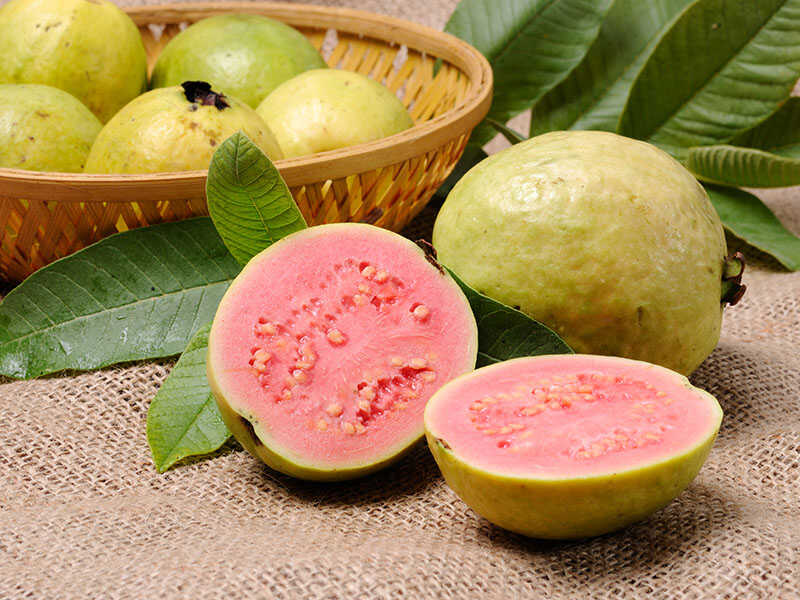
Brazilian guavas have a rich history of cultivation, with their origins rooted in the Brazilian Amazon. It is a small fruit with a round or oval shape, varying in size, complemented by its enticing yellow or light green skin.
Its firm yet smooth texture becomes softer as the fruit ripens. And underneath the smooth, thin skin is the dense flesh in creamy or reddish-pink color. The flesh is also semi-grainy, with a lot of small edible seeds.
Grab a bite, then you can feel a delightful blend of sweet flavor with the aromatic, fruity scent that lingers on your palate.
As a powerhouse of nutrition with antioxidants, vitamins, and minerals, they contribute to a healthy lifestyle to improve your immune system/blood sugar level and reduce the risk of heart disease.
People regularly eat them fresh, but you can enjoy them in multiple culinary creations, such as smoothies, pies, and salads. Take note of their availability throughout the year in tropical climates or in late winter in subtropical countries.
18. Babaco
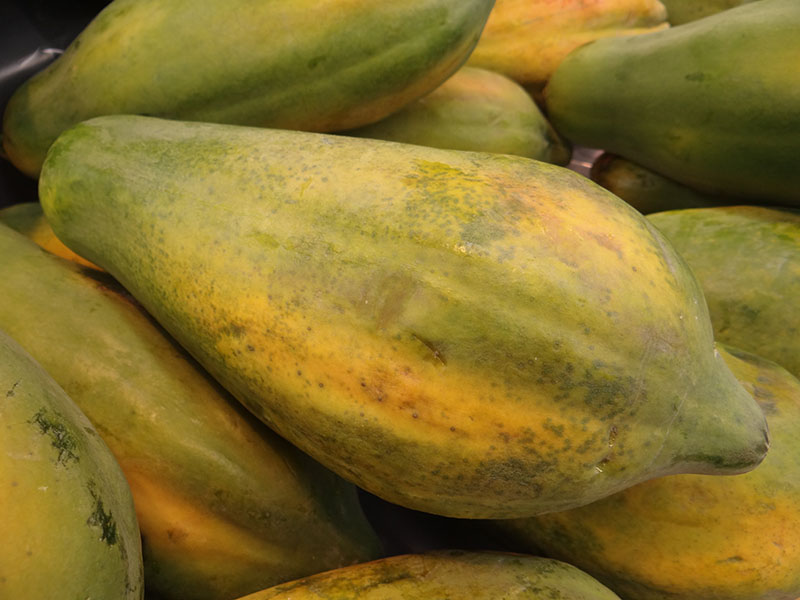
Now comes the captivating babaco fruit, an exotic delight native to the highlands of Ecuador. This fruit is characterized by its elongated, pentagonal shape, measuring up to 12 inches long.
If you have seen papaya, babaco’s appearance is quite similar to this fruit. That’s why the moniker of babaco is mountain papaya.
The skin of the babaco is thin and smooth, displaying a vibrant yellow hue when ripe. Inside, you’ll find seedless, succulent flesh that’s both tender and refreshing.
The taste of babaco is a unique blend of sweet and tangy, with hints of pineapple, papaya, and kiwi. Its pleasant aroma further enhances the overall sensory experience, making it a true treat to your menu.
The versatility of babaco fruit opens up a world of culinary possibilities. You can enjoy it fresh, add it to salads or fruit cocktails, or blend it into smoothies and juices.
In fact, it works well as a papaya replacement in any recipe that calls for papaya. Babaco is also a great meat tenderizer and marinade, similar to papaya.
Furthermore, packed with the digestive enzyme papain, the extract of babaco can be used as an ingredient to make digestive supplements.
19. Bacuri
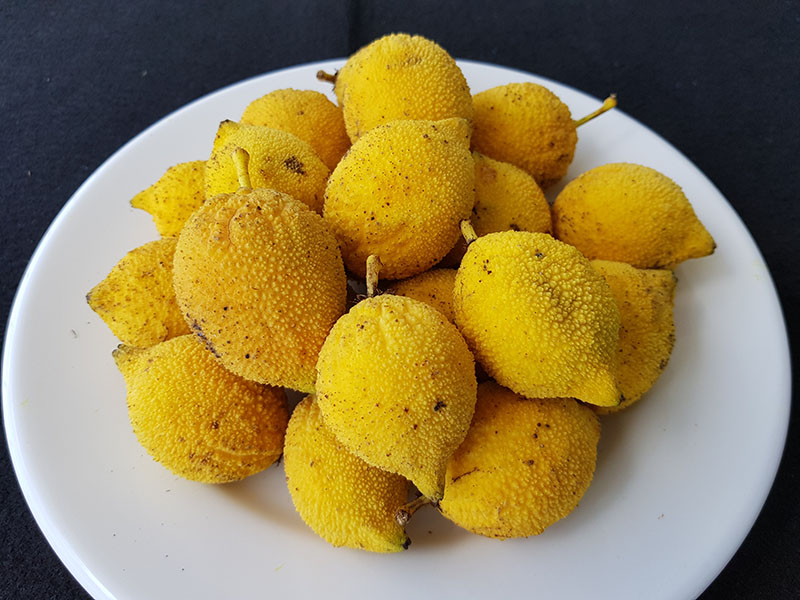
Have you ever heard about the bacuri fruit, a tropical gem native to the Brazilian Amazon and Northeast Regions?
Bacuri fruit is round or oval, about the size of an orange, and boasts a thick, leathery skin that turns from green to brownish-yellow when ripe. Its rind looks similar to papaya’s rind. And when pressed, the rind will release yellow latex.
Beneath the skin, there is a soft, creamy pulp that surrounds several seeds. When it comes to flavor, the bacuri fruit is a mix of sweet and sour.
Locals, particularly Brazilians, typically consume them fresh by scooping out the pulp. For other uses, this versatile component is perfect for crafting jams, jellies, liqueurs, and ice cream. It’s also a favored ingredient in traditional Amazonian cuisine, featuring in dishes like fish stew and various sauces.
On the other hand, the oil extracted from the seed has anti-aging properties. It can heal wounds and be used in creating cosmetic products, like skin and hair care.
20. Banana
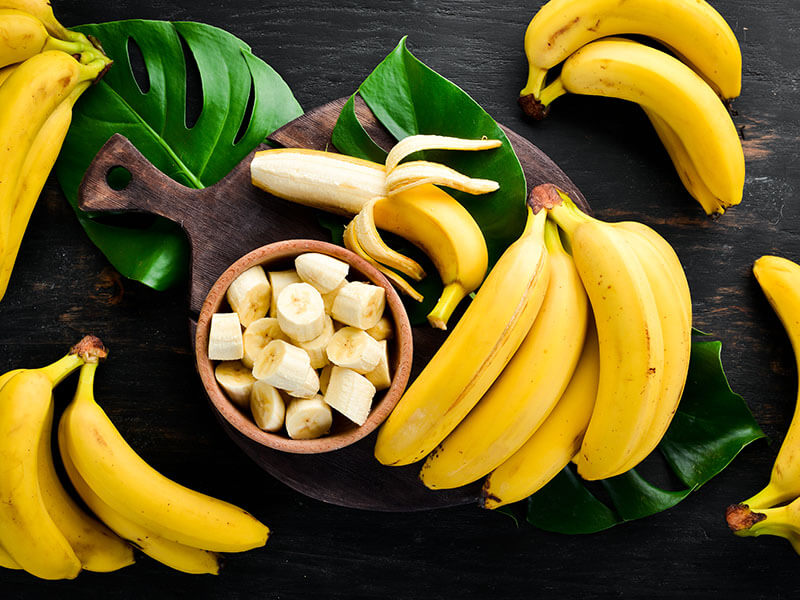
You might be too familiar with the humble banana, a staple fruit known for its elongated, curved shape and vibrant yellow peel when ripe. Peeling away the skin reveals a soft, creamy flesh that is not only delicious but also packed with nutrients.
Bananas possess a smooth texture that makes them an ideal snack or addition to diverse recipes. Their flavor strikes a harmonious balance between sweetness and a gentle tartness. Though subtle variations may exist, classic banana aroma is unmistakable.
The best way to enjoy the flavor of this fruit is to eat them fresh. They are also versatile in the kitchen. From smoothies and pancakes to banana bread and ice cream, their natural sweetness and smooth texture add more texture and flavor to your dishes.
With a wealth of nutrition sources (5), bananas are known for their numerous health benefits. They’re particularly rich in potassium, vitamin C, and vitamin B6, which contribute to maintaining a healthy heart, immune system, and nervous system.
Among hundreds of banana types, the Cavendish variety is the most prevalent, with distinctions in size, hue, and flavor. Other lesser-known varieties encompass red bananas, baby bananas, and plantains.
Furthermore, the banana plant flourishes in tropical environments and is grown in numerous global regions. As a perennial fruit, bananas are consistently accessible, offering a handy and nourishing choice for individuals seeking to incorporate more fruit into their meals.
21. Barbadine Fruit
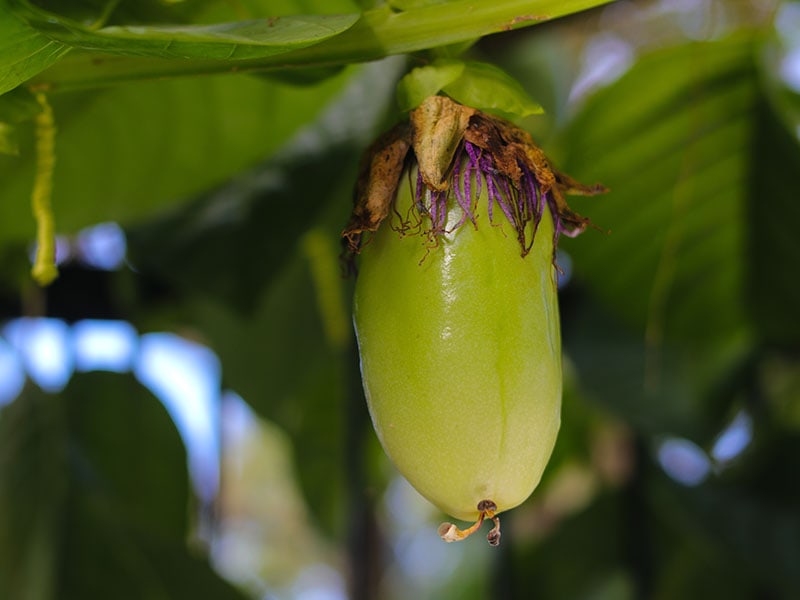
The Barbadine fruit, also recognized as the giant granadilla, is a distinctive tropical treat guaranteed to capture your curiosity. Hailing from South America’s tropical regions, the Barbadine fruit prospers in balmy climates and is typically harvested during summertime.
Sporting an elongated, oval form and green, faintly crinkled skin, the fruit can reach up to a foot in length, rendering it a remarkable sight. Upon slicing it open, one discovers a whitish, cotton-like pulp teeming with petite seeds. Its flesh has a soft, consumable texture.
This tropical fruit is mildly sweet with a floral note. The fruit is often enjoyed fresh, with the pulp scooped out and savored as a refreshing treat.
While there may not be a wide range of varieties, the barbadine fruit’s versatility in culinary recipes makes up for it. It can be used in salads, smoothies, juices, and desserts. In Florida, the natives even use it to make wine.
Barbadine fruit is also known for its health benefits, as it is rich in vitamins A and C and packed with antioxidants.
21. Barbados Cherry
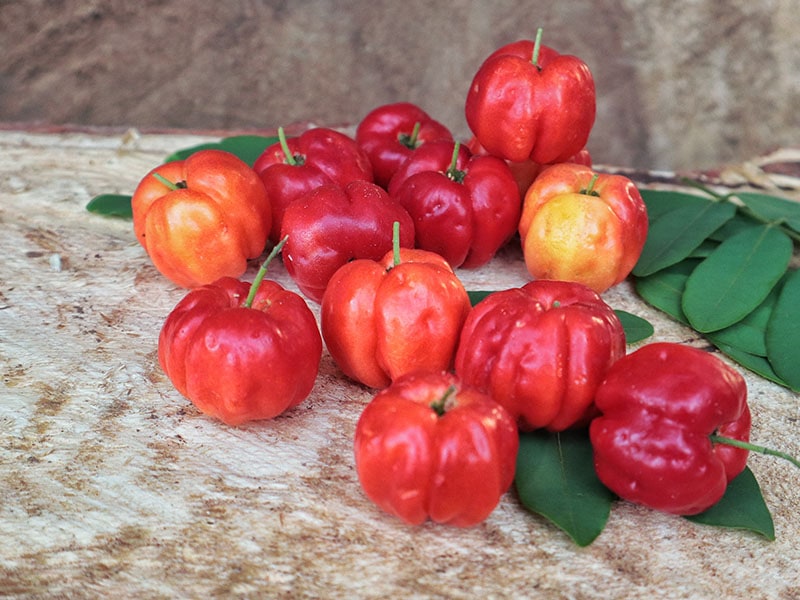
Originating from the Caribbean, barbados cherry is often recognized for its striking red hue or deep crimson and round shape. With a diameter of nearly one inch, its glossy exterior can be quite inviting.
As you bite into its soft and smooth flesh, its juicy, sweet, and slightly tart flavor might surprise you. The fruit also contains 2 to 4 seeds inside, so remember to discard them. And these seeds are not as hard as common cherries.
You can enjoy them raw and fresh or add them to your refreshing smoothies, delicious pies, or refreshing salads.
Barbados cherry is more than just its delightful taste. This small fruit packs a nutritional punch, as it is an excellent source of vitamin C, antioxidants, and various minerals. It’s no wonder that adding this cherry to your diet can provide numerous health benefits.
This cherry’s seasonality may depend on the region, but it generally thrives during the spring and summer months.
23. Bael
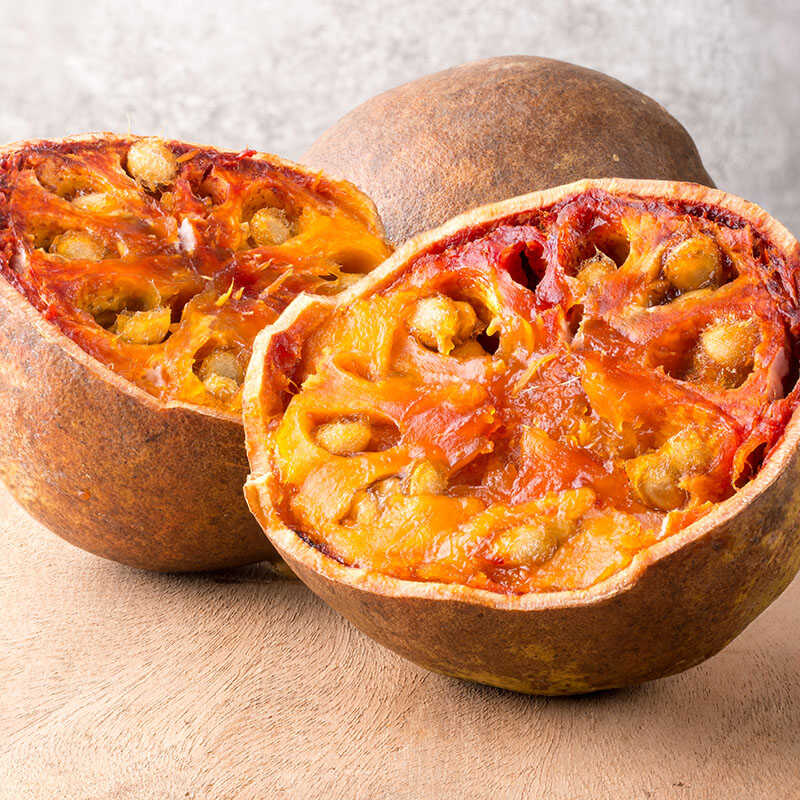
Originally native to India and Southeast Asia, Bael (aka wood apple) stands out with its unusual appearance. Its hard, smooth, and woody shell is pale green to yellow in color. And they do not split open when ripened. Its size varies from 2 to 10 inches in diameter.
You will need a knife or shears to cut the fruit in half. Its flesh texture is soft with aromatic pulp interspersed with seeds (around 10 to 15 seeds).
As you taste the Bael fruit, your palate will experience a distinctive flavor with a light sweetness with a woody and bitter note.
There are several ways to enjoy this fruit. Of course, the most convenient way is to consume them fresh. But do you know that dried bael fruit is an excellent addition to herbal tea due to its aroma? In Thailand, bael fruit tea served with ice is popular.
Regarding its nutrients, bael is famous for its riboflavin source, along with vitamins A, and C, calcium, fiber, and more.
24. Betel Nuts
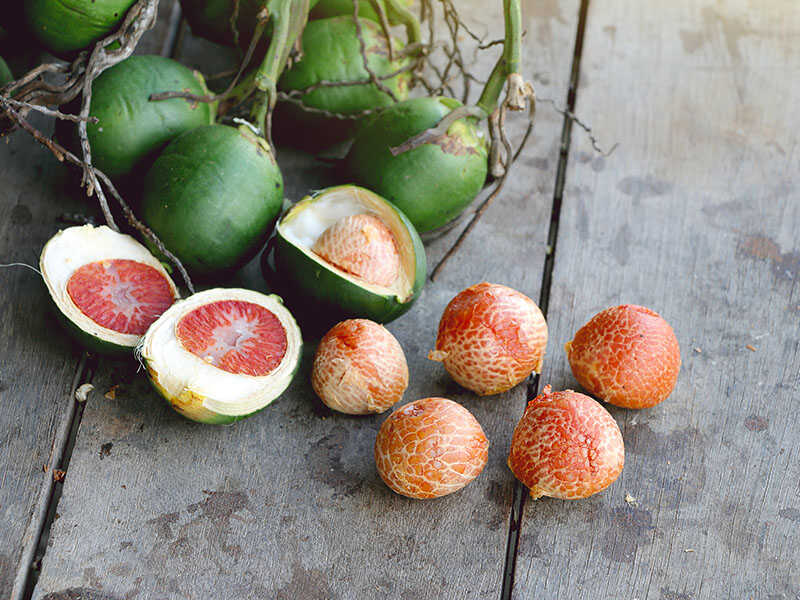
Betel nuts, also known as areca nuts, are small, brown, and slightly oval-shaped fruits that grow on the Areca palm tree. With a hard exterior, the nut’s interior is fibrous and slightly chewy in texture.
About taste, betel nuts possess a slightly bitter and astringent flavor, which some might find to be an acquired taste.
Within Southeast Asia and the Pacific Islands, betel nuts are customarily masticated alongside betel leaves, slaked lime, and assorted spices, yielding an invigorating sensation attributed to the alkaloids present.
Nonetheless, it is vital to acknowledge that betel nut chewing has been associated with multiple detrimental consequences, encompassing oral cancer and additional health complications. Thus, it is imperative to remain informed about these hazards prior to consumption.
Even though betel nuts are not commonly used in recipes like other fruits, their cultural significance in various regions is worth mentioning. Betel nuts are often used in traditional ceremonies and rituals, symbolizing hospitality and respect.
25. Black Sapote
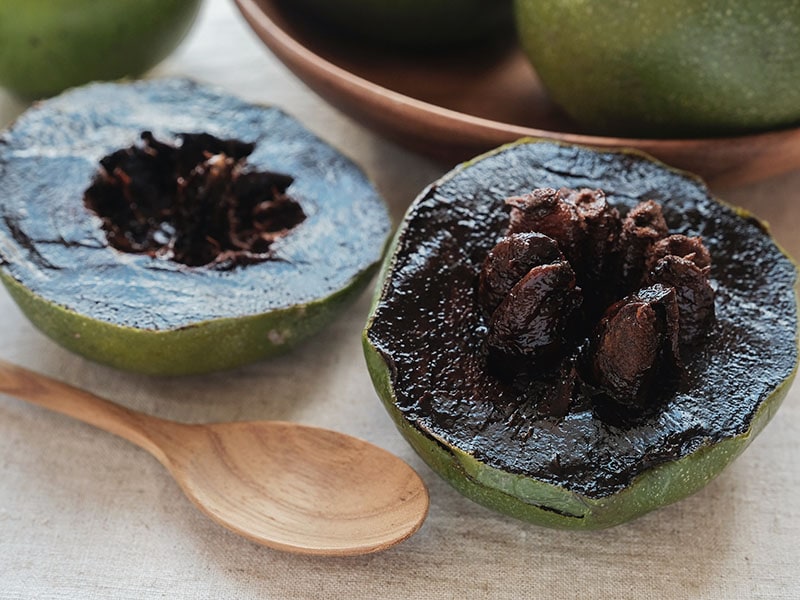
The Black Sapote captivates with its greenish-brown, mildly crinkled exterior. Dubbed the “chocolate pudding fruit,” this intriguing produce varies in diameter from 2 to 4 inches. When ripe, its interior boasts a velvety, dark brown custard-like consistency that truly justifies its moniker.
Upon savoring Black Sapote, you’ll be delighted by its subtly sweet, caramel-chocolate essence. However, bear in mind that unripe specimens are not suitable for consumption.
This fruit’s distinctive taste and fragrance can enhance a variety of dishes, including desserts, pastries, snacks, or sauces.
They can even complement savory meals to achieve a well-rounded flavor profile. If fresh consumption is your preference, utilize a spoon to scoop out the delectable pulp and enjoy.
Speaking of their benefits, this fruit has many nutrients, including vitamins A and C, potassium, and fiber.
For your information, The fruit is native to Central America and Mexico but has also been cultivated in the United States (Florida), the Philippines, and Australia.
26. Burmese Grape
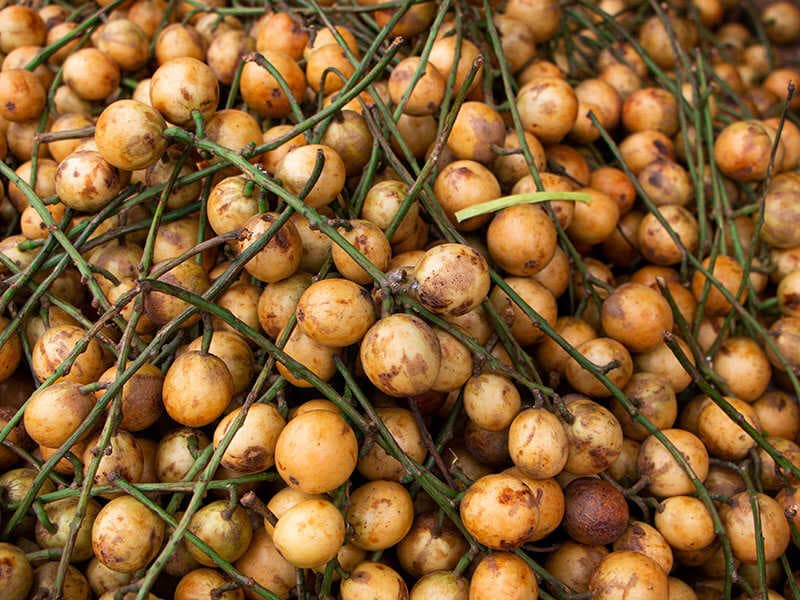
Burmese grapes, known scientifically as Baccaurea ramiflora, are small, round, or slightly oval fruits. It is a tropical tree mainly grown in Southeast Asia, especially in Indonesia, Thailand, Malaysia, Myanmar, etc.
These juicy fruits have smooth skin that varies in color from yellow to purple-red, depending on their ripeness.
Its flesh is succulent and tender, bursting with a sweet and slightly sour flavor. Keep in mind to remove their seed while eating. The texture, in fact, is pretty similar to lychee but more fibrous. They are great to eat fresh. On the other hand, many locals also use it to make wine, jelly, or jam.
Apart from their taste, Burmese grapes are also valuable sources of nutrients. They are rich in vitamins and minerals, including vitamin C, iron, and pectin. The root and bark are also utilized to make medicines.
27. Biriba
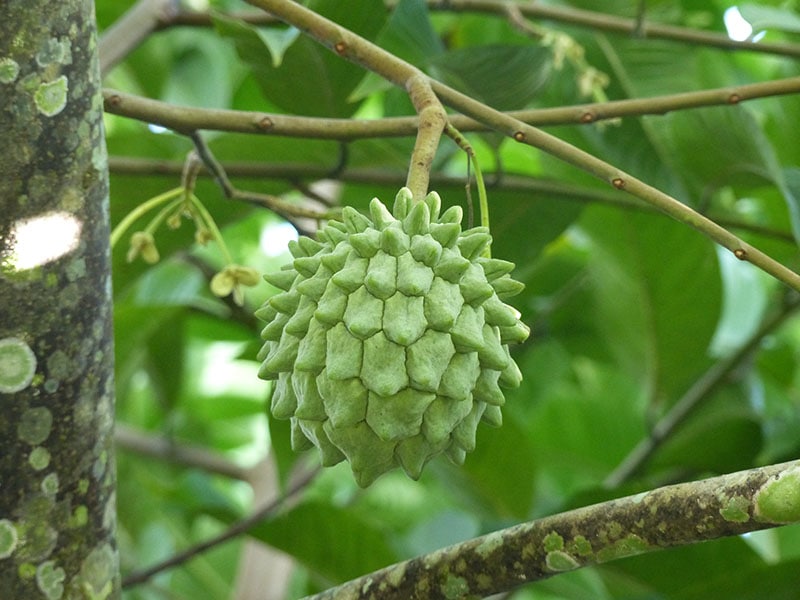
Biriba, a unique tropical fruit, draws attention with its irregular, bumpy surface and greenish-yellow color. Roughly the size of a grapefruit, it has a unique appearance that may resemble a heart or even a hand grenade with many fleshy thorns.
When overripened or bruised, the yellow skin might turn black. Plus, the fruit’s interior boasts a soft, creamy-white pulp that encases numerous small seeds. When you take a bite of Biriba, you can feel the pleasantly sweet and tart flavor reminiscent of a lemon meringue pie.
It can be enjoyed fresh or added to your desserts. In Brazil, people use it to make wine from its juice.
It is native to regions of the Brazilian-Peruvian Amazon but also cultivated in parts of the Caribbean and Asia. Biriba is generally available year-round.
28. Bitter Melon (Bitter Gourd)
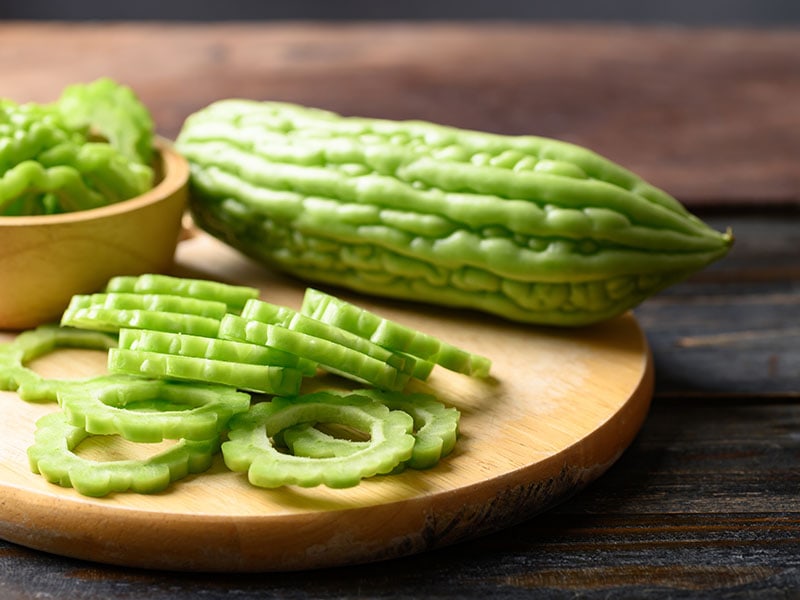
The fancy bitter melon, or bitter gourd for some, is a special fruit that loves tropical and subtropical spots. Imagine a cucumber with a lumpy outside and a long shape, with colors from green to light yellow.
One bite, and you’ll quickly grasp why it’s dubbed “bitter.” With its potent, tangy taste, it’s not for everyone, but some folks relish its peculiar charm.
Now, in the foodie realm, this intriguing fruit masquerades as a veggie. There’s no shortage of ways to whip it up, from stir-fries and soups to delightful drinks. You can stuff it, pickle it, or plop it in a curry, showing off its culinary flair.
Bitter melon boasts a bevy of health-boosting perks. Brimming with vitamins A, C, and K, plus minerals like potassium, magnesium, and zinc, it’s also an antioxidant powerhouse.
Traditionally, it’s been used to balance blood sugar levels, making it a hit among those with diabetes.
You can stumble upon bitter melon throughout the year, but it truly dazzles during the sun-kissed summer months. As for its natural habitat, bitter melon flourishes in the diverse landscapes of Asia, Africa, and the Caribbean, where it basks in the warmth and embraces its surroundings.
29. Balsam Apple
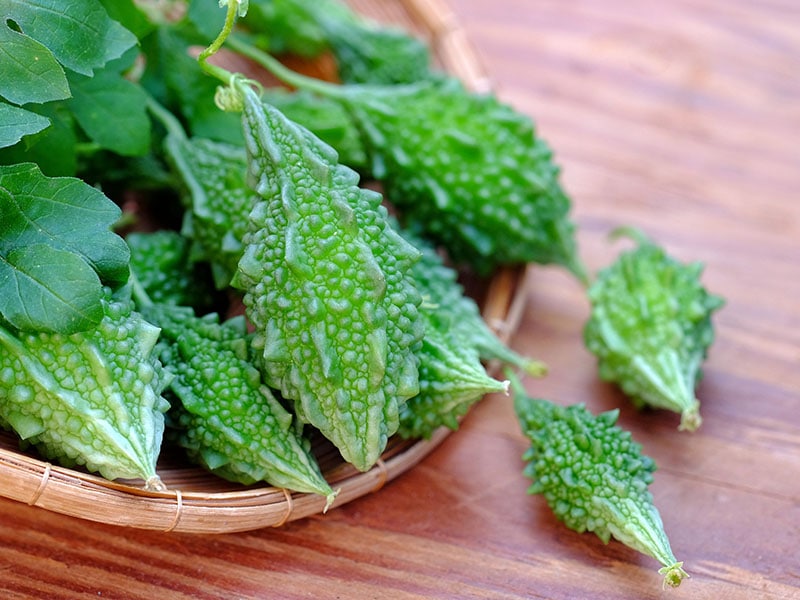
One more fruit that begins with “B” is balsam apple, a cool fruit that’s different from its cousin, bitter melon. This wild fruit is well-liked in tropical areas like Asia, some parts of Africa, and Australia.
It has a peculiar appearance, with its small size and bright yellow-orange color when ripe and green when young. Overall, they might not look attractive with warty skin.
It’s essential to note that only young ones are edible since ripe and orange balsam apples can cause vomiting and diarrhea.
When eating, you’ll notice its soft texture. Regarding its flavor profile, it’s not overly sweet, but it does possess a mild bitterness.
30. Breadfruit
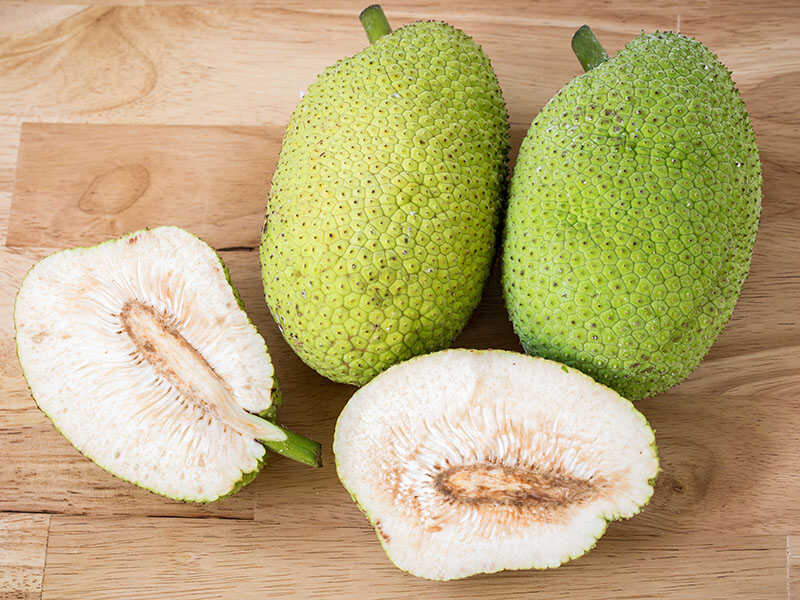
Breadfruit is another special tropical fruit. It has a large, round shape, often measuring 6-12 inches in length and 4-8 inches in diameter. The outer skin is green and bumpy, with a pattern that resembles a network of irregular polygons. Inside, you’ll find starchy, creamy-white flesh.
The texture of breadfruit is quite remarkable. When cooked, it transforms into a smooth, slightly sweet, and somewhat sticky consistency reminiscent of freshly baked bread. Its aroma is subtle yet inviting.
Moreover, this one is also related to jackfruit – a brilliant J-fruit, sharing a similar external and internal look. Breadfruit comes in a variety of cultivars, each with its characteristics. Some are seedless, while others contain seeds that can be roasted and consumed as a nutritious snack.
Regardless of the type, breadfruit is versatile in many recipes, from traditional Caribbean dishes to modern fusion cuisine. It can be roasted, boiled, fried, or even turned into flour to create dough for bread and pastries.
Breadfruit is a healthy addition to your diet, rich in vitamins and minerals. It’s high in carbohydrates, dietary fiber, and potassium, making it an excellent source of energy and nutrition. The seeds also provide protein and other vitamins.
It is available year-round in tropical countries. However, people typically harvest this fruit during the summer, although its availability can extend into the fall in some regions. In the USA, its season is in late summer in Florida and from July to February in Hawaii.
31. Batuan
Batuan or Batwan fruit is native to the Philippines, where it has been a staple ingredient in local dishes for generations.
It has a round or slightly oval shape, with a size similar to a small apple. The fruit’s exterior is distinctive yellow-green, while the inside features a white, segmented pulp surrounding a central seed.
The texture of batuan is smooth on the outside, while the pulp inside is firm and somewhat dry. This fruit’s flavor profile has a notably sour taste that sets it apart from other fruits. It’s often used to add a tangy kick to various dishes.
In the kitchen, batuan is predominantly used in Filipino cuisine, serving as a souring agent in dishes like sinigang, a traditional soup. In addition, the fruit’s acidity perfectly complements the savory flavors in these recipes.
Nutritionally, batuan contains vitamins and minerals, such as vitamin C, calcium, potassium, and iron. These nutrients help with lots of health perks, like making your immune system stronger and lowering cholesterol levels (when eaten fresh).
32. Borojó
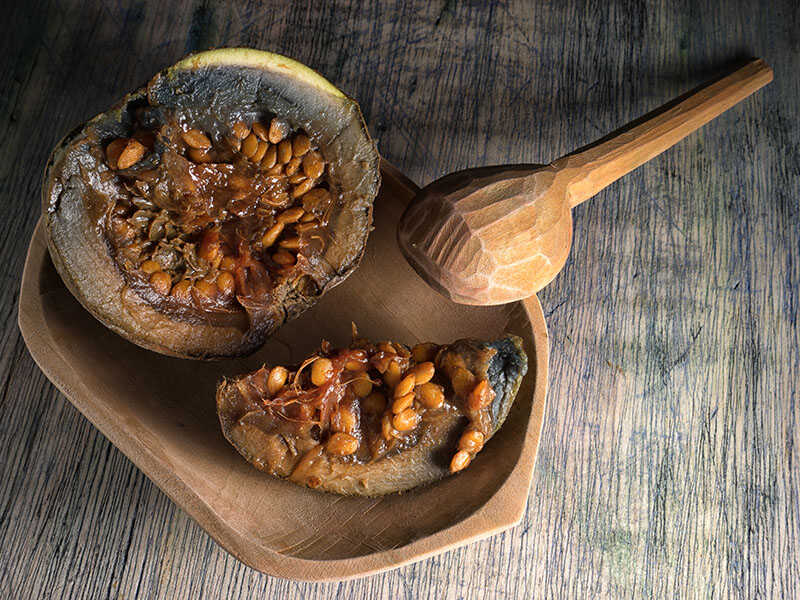
Borojó is a fruit native to South America. Borojó thrives in tropical climates. Borojó mainly grows in Colombia, Ecuador, and Panama, in thick, damp rainforests.
It’s round, has a brown outside, and a soft, jelly-like inside. About 4 to 5 inches wide, its pulp tastes rich and tangy and has a special smell.
This fruit is full of vitamins B1, B2, and B3, and important minerals like calcium, phosphorus, and iron. It’s also known for its antioxidants.
Borojó is loved not just for its nutrition, but also for its possible health uses. It’s been traditionally utilized for its energy-boosting and aphrodisiac properties.
You can eat the fruit raw or add it to smoothies, juices, or make jams. Some people also ferment it to make an alcoholic drink.
33. Bottle Gourds
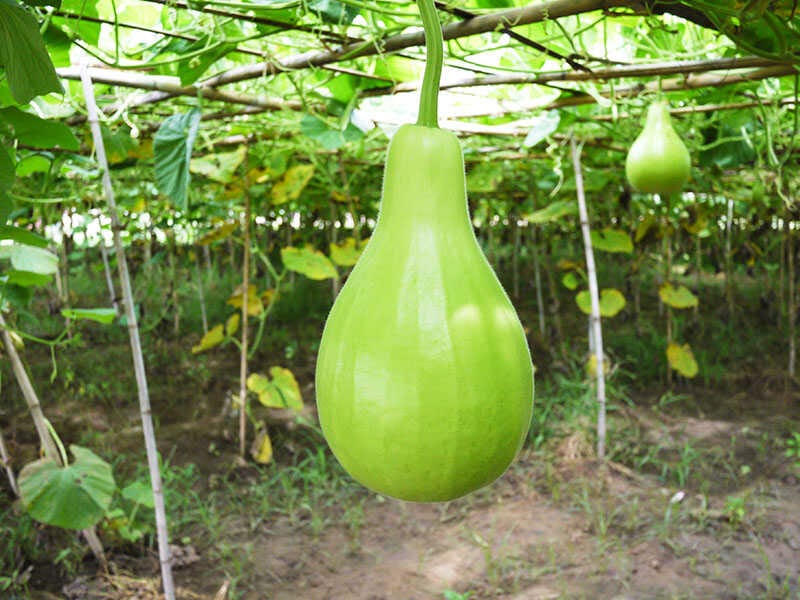
Bottle gourds own a unique appearance that catches the eye. They’re native to Africa but have been cultivated around the world for centuries, making them a staple in many global cuisines, especially in Asian countries.
These fruits have smooth green skin and can grow really big, sometimes up to 40 inches long. They look like bottles, with a skinny neck and a rounder bottom, which is how they got their name.
The texture of bottle gourds is quite pleasant, with firm, spongy flesh that’s relatively juicy. They have a mild, subtly sweet flavor that’s quite versatile in culinary applications.
From soups and stews to stir-fries and even beverages. These fruits are a hit in many Asian and Indian dishes, showing up in recipes like curries and dals.
Bottle gourds are good for you, with not many calories but lots of vitamins and minerals. They’re especially full of vitamin C, potassium, and fiber.
4. And Other Lesser-Known Fruits Start With B
The last section is about several fruits belonging to different fruit categories. They can be drupes, citrons, stones, and beyond.
34. Buffaloberry
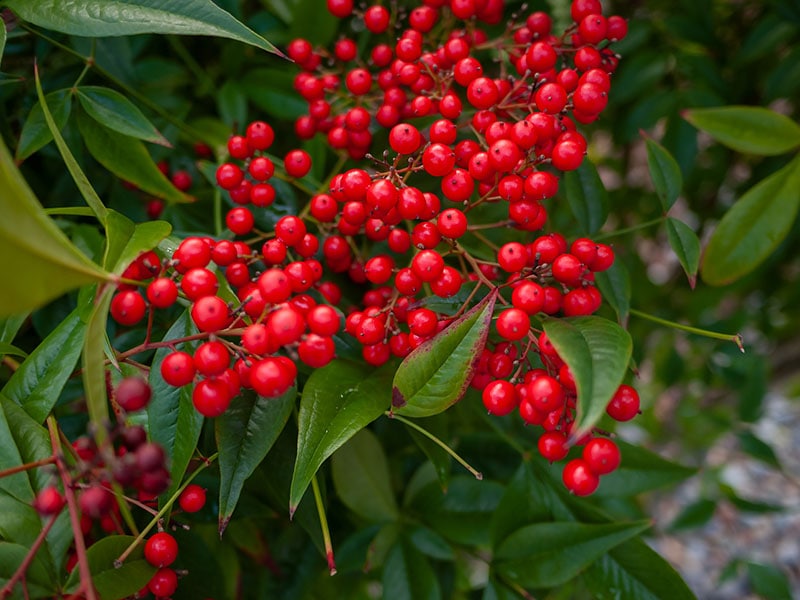
Buffaloberry is a small yet mighty fruit that boasts a vibrant red or orange color with a somewhat oval or spherical shape. When it comes to size, they’re typically around the same dimensions as a small cherry.
They are both firm and slightly rough in terms of texture. When you take a bite, you’ll enjoy the yummy juiciness and an interesting mix of tastes – a mix of sweet, tangy, and even a little bit bitter.
It’s cool to know that Buffaloberry comes in different types, each with its own special features. Some grow naturally in certain areas, while others are grown to do well in all kinds of places.
Buffaloberry is particularly high in vitamin C and antioxidants. In cooking, they can be added to recipes or used to make jam and compotes.
What’s more, buffaloberries offer other valuable components. For instance, people also utilize it for various purposes, such as natural dyes or traditional medicines.
35. Beach Plum
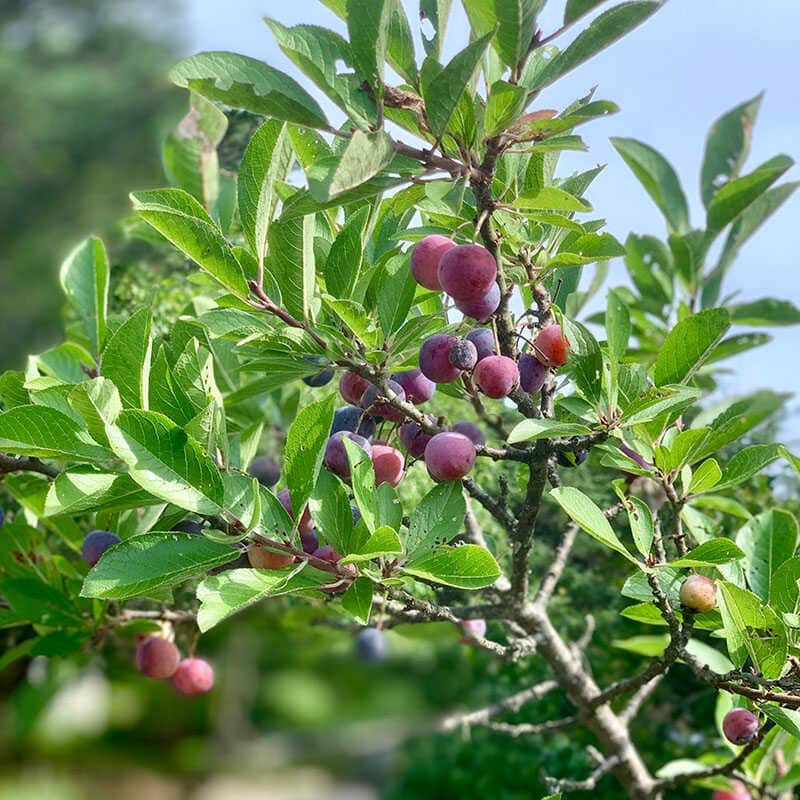
Beach Plum, scientifically known as Prunus maritima, is a unique fruit originating in the coastal regions of eastern North America. This small stone fruit, similar in appearance to a tiny plum, boasts a beautiful deep purple or dark red color when ripe.
The size of a beach plum is generally around an inch in diameter, making it a perfect bite-sized treat.
The fruit’s texture is somewhat firm and smooth, with a juicy interior that surrounds the central pit. About its flavor, beach plums have a sweet yet tart taste, accompanied by a subtle, pleasant aroma.
There are several varieties of beach plum, each with slight differences in color, size, and taste. But most of them are perfect for eating fresh. Culinary enthusiasts can use them to make jams and jellies. The fruit also lends itself well to creative cocktails and refreshing summer drinks.
36. Bearberry Fruit
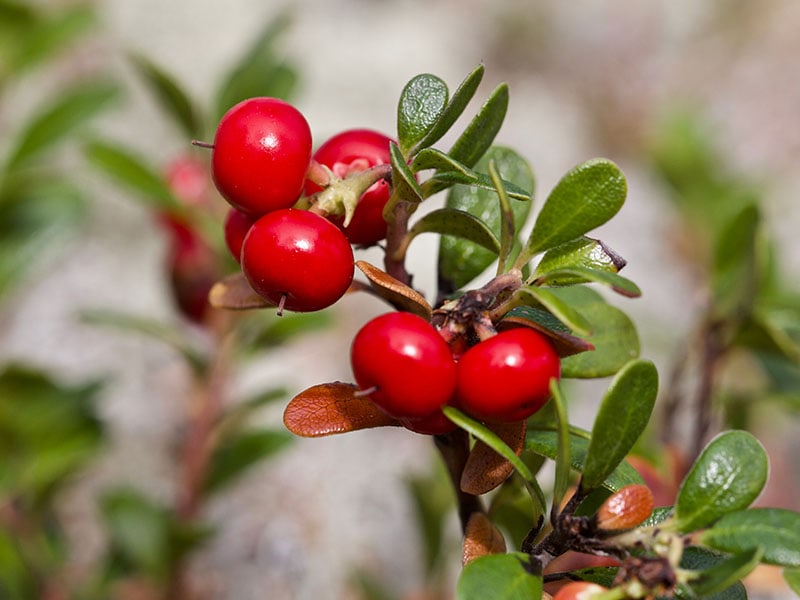
Bearberry fruit is a lesser-known gem in the fruit world. Picture this: tiny, bright red to dark purple berries, about the size of a pea, growing in clusters on a low, evergreen shrub. When ripe, these charming little fruits have a smooth, shiny surface and a firm, slightly chewy texture.
As for the flavor, bearberry fruit tastes fairly bland when eaten raw. But if you cook them, they can boast their natural sweetness that resembles the cranberry’s flavor.
There’s more than one type of bearberry; in fact, there are three main species – Arctostaphylos uva-ursi (common bearberry), Arctostaphylos rubra (red bearberry), and Arctostaphylos alpina (Alpine bearberry) – each with its unique characteristics.
Bearberry fruit is brimming with antioxidants, especially hydroquinones, which are celebrated for their antimicrobial qualities. These delightful berries also provide a generous dose of vitamin C. Interestingly, their leaves can serve as a soothing remedy for headaches.
37. Black Diamond Apple
Black diamond apple is the fruit that’s sure to pique your interest. As the name suggests, these apples boast a stunning deep purple or black hue. Their size is similar to that of a regular apple, but their shape is slightly elongated.
Its skin is pretty thick and smooth, while the flesh inside is firm and juicy. Like Envy apple – a wholesome fruit starting with E letter, black diamond apple is one of the sweetest types since it contains a high level of glucose.
The black diamond apple is cultivated primarily in the Nyingchi area of Tibet. The region’s unique growing conditions, with its high altitude and intense sunlight, contribute to the apple’s striking color and robust flavor.
Black diamond apples take a lot of years (up to 8 years) to reach maturity. However, their season is short as well. Due to the complexity of growing, no wonder why the price of black diamond apples is expensive.
38. Blood Limes
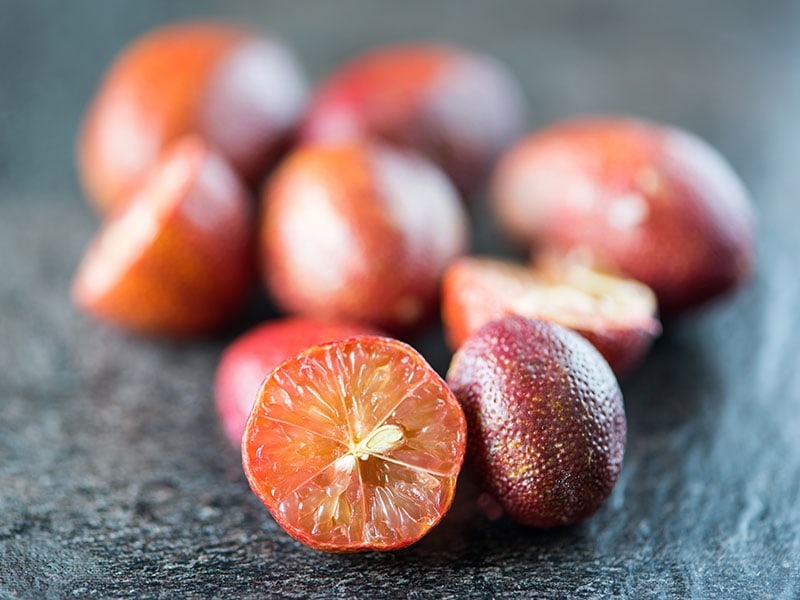
It’s time for blood limes, an incredible citrus fruit that’s visually striking and flavorful. They’re native to Australia but have gained popularity worldwide thanks to their unique appearance and flavor.
These small, oval-shaped gems boast a deep red to burgundy hue with juicy flesh and edible skin. Plus, it is smaller than regular limes.
Blood limes have a complex flavor profile that combines the sweetness of regular lime with a tangy, slightly bitter edge. The aroma is captivating, with an unmistakable citrus fragrance that’s both zesty and refreshing.
Interestingly, blood limes are a hybrid fruit created by crossing the finger lime (an F-named fruit and vegetable of Australia) with the more common Ellendale mandarin. This fusion has resulted in a fruit that’s tasty and versatile.
Blood limes can be used in various recipes, from refreshing beverages to zesty salads. They’re ideal for injecting a splash of color and a surge of taste into smoothies, salsas, and even desserts.
The health advantages of blood limes are remarkable, as they’re rich in vitamins A, B, C, and E.
39. Blood Orange Fruit
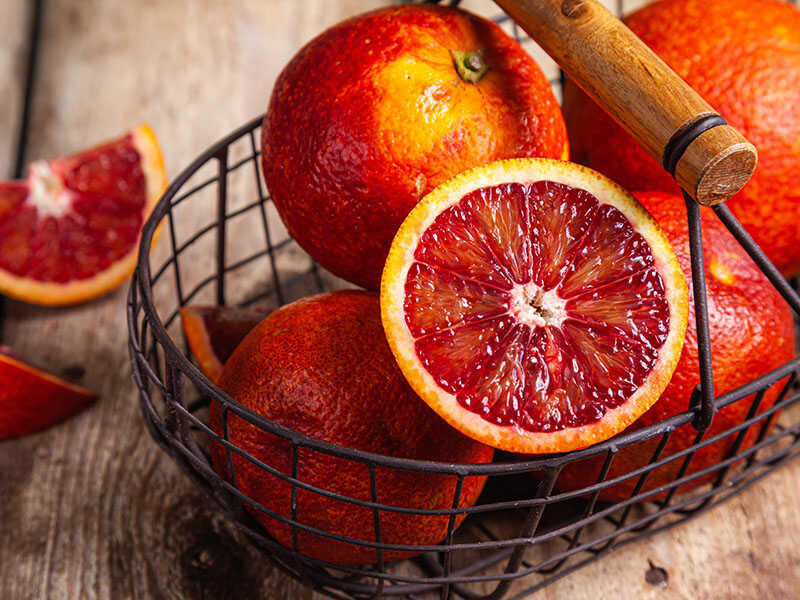
Originally native to the Mediterranean region, blood oranges are now cultivated in various parts of the world, including Italy and America, particularly California and Florida.
Blood orange truly stands out with its deep red, almost burgundy flesh. These citrus gems are roughly the size of a typical orange, with their skin often exhibiting a subtle reddish tint.
What’s truly captivating is the explosion of taste that awaits as you take a bite; they offer a delightful blend of sweet and tart, accompanied by a whisper of raspberry aroma. In fact, their flavor is considerably more intense than regular orange varieties.
Their texture strikes a perfect harmony between firmness and juiciness. The stunning hue of the flesh is attributed to anthocyanins, powerful antioxidants that bestow numerous health advantages.
Additionally, blood oranges are loaded with essential vitamins and minerals like vitamin C, potassium, and fiber. While there are several varieties of blood oranges, some of the most well-loved ones include Moro, Tarocco, and Sanguinello.
These fruits are cherished in recipes for smoothies, cocktails, salads, desserts, and beyond. Furthermore, the peel and seeds are valuable too, as they can be utilized to produce essential oils and other extracts.
These fruits have a specific seasonality, usually available from December through May, and it also depends on the blood orange type that you buy.
40. Burdekin Plum
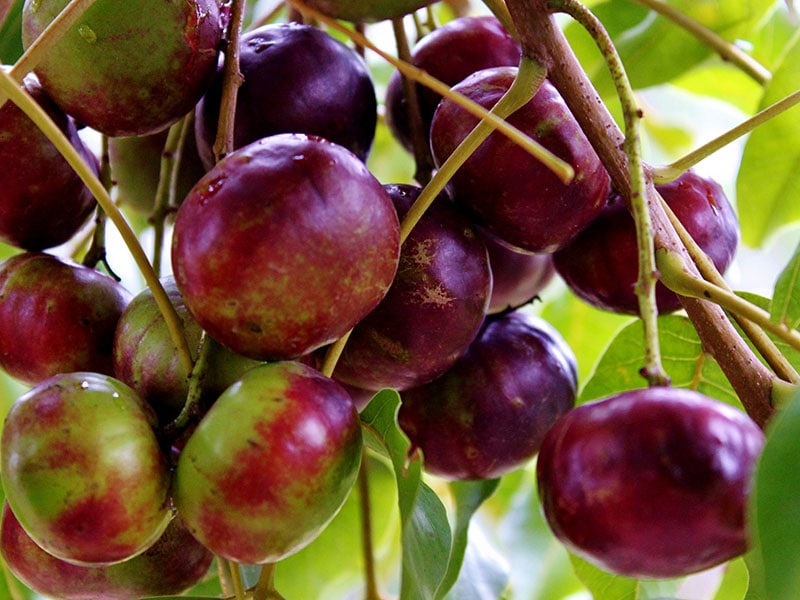
Here are some fascinating facts about the Burdekin plum, a special fruit with many intriguing qualities. This fruit boasts a rich purple hue and an oval shape that narrows towards the top. In terms of size, it’s akin to a sizable plum or a petite apple.
Upon first handling a Burdekin Plum, you’ll be struck by its firm, smooth texture, which gradually gives way to a juicier consistency as it ripens. The flavor varies based on the flesh color. For example, the white flesh has a sweet-and-tart flavor, and the red flesh is quite tart.
The Burdekin Plum, native to Australia, is a stone fruit in a single variety. This fruit is not only delicious but also nutritious. It’s especially high in antioxidants, vitamins C, minerals, and dietary fiber.
Its cultivation is primarily concentrated in Australia, where Indigenous communities have enjoyed it for centuries.
41. Buddha’s Hand
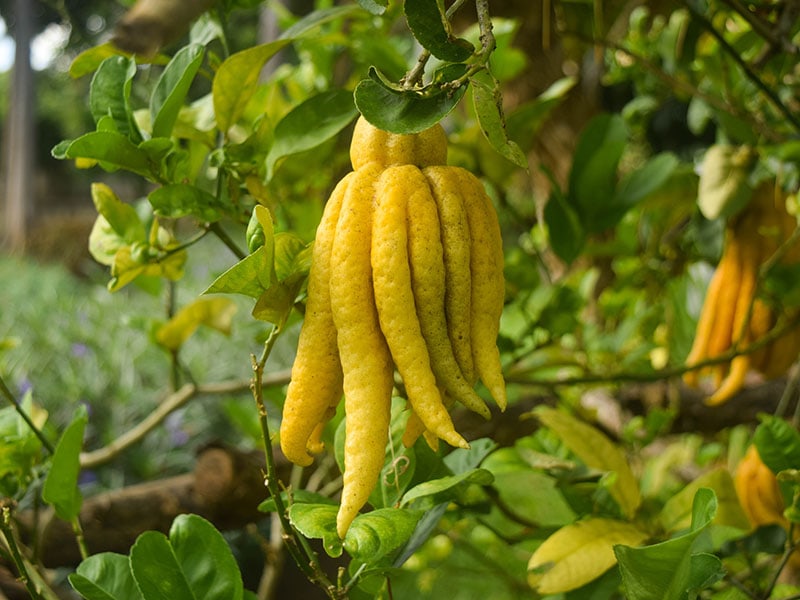
If you haven’t been to Asia, I bet you’ve never seen a fruit as unique as Buddha’s Hand!
This citron variety is a real conversation starter with its yellow color and finger-like segments, reminiscent of a hand in a Buddhist gesture. It’s not your typical round or oval fruit, but its unusual appearance doesn’t diminish its charm.
When you touch Buddha’s Hand, you’ll notice its firm and smooth exterior. As you might expect, this extraordinary fruit has a zesty and aromatic fragrance. Unlike other citron fruits, it has little to no pulp or juice, making it perfect for zesting.
The fruit’s taste is a blend of lemon and yuzu flavors with just a hint of bitterness. There are many ways to use this fruit, such as garnishes or add to desserts, candies, and even savory dishes.
Beyond its culinary uses, Buddha’s Hand also has other applications. For instance, its rind is often used for medicinal purposes. The fruit is also a symbol of long life and happiness in China, which makes them a thoughtful gift on special occasions.
42. Beechnut
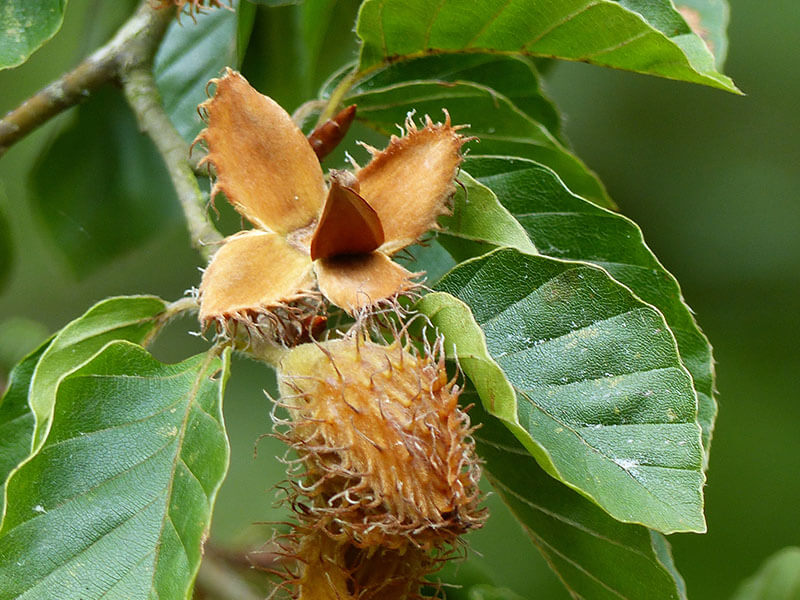
Another lesser-known yet remarkable fruit is beechnuts. They’re the small, triangular seeds in spiky burrs on beech trees. Beechnuts have a rich brown color, and their smooth texture is quite enjoyable.
Beech trees, where these nuts come from, grow naturally in Europe, Asia, and North America. They like areas with good soil that isn’t too wet.
Beechnuts have a gentle sweet and nutty taste, making them great for lots of recipes. You can roast them or turn them into flour for bread or adding to soups and stews.
Even though they’re not as famous as other nuts, beechnuts are healthy. Did you know they have twice the protein and calories as acorns? They also have good fats, fiber, and protein, making them a super snack.
You’ll find that beechnuts are typically harvested in the fall, but their availability may extend into early winter.
43. Black Mulberry
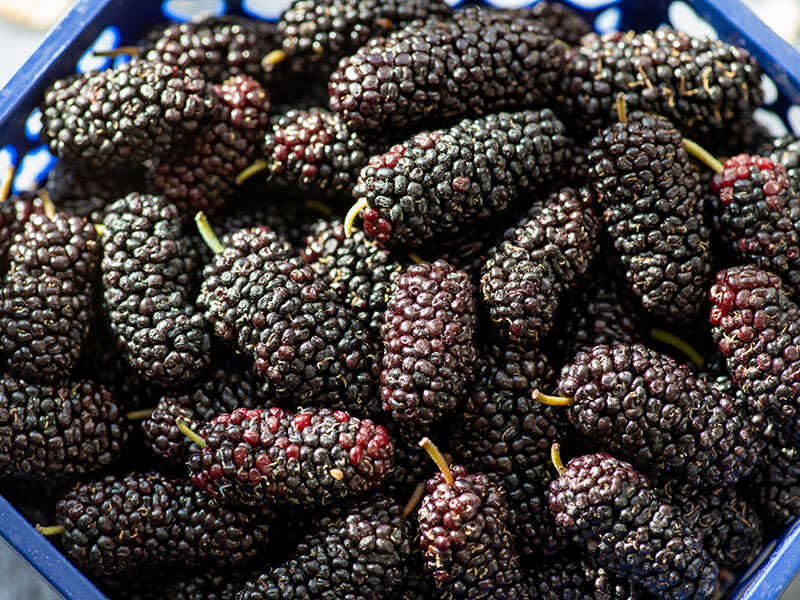
Allow me to introduce you to black mulberries, an incredible fruit that often doesn’t get the recognition it deserves.
These small, deep purple drupes have an elongated shape, resembling an elongated raspberry. Their tender, succulent texture makes them perfect for snacking or incorporating into various dishes.
Prepare to be smitten by the sweet and slightly tangy taste of black mulberries, often complemented by a subtle, earthy aroma. These versatile berries can effortlessly enhance your culinary masterpieces, from jams and pies to smoothies and salads.
They’re high in vitamins, minerals, and antioxidants like vitamin C, potassium, and iron. These nutrients help keep you healthy and support your immune system, heart, and brain.
Although there are red and white mulberries, black mulberries stand out for their special flavor and color. You can find them fresh from June to August. Black mulberries come from Western Asia and the Middle East, but they grow well in places with mild weather and good soil.
And compared to other mulberries, this variety is considered the highest quality mulberry.
44. Banganapalle Mango
The origin of the Banganapalle mango can be traced back to India, specifically the region of Andhra Pradesh, where it’s been cultivated for generations. The fruit has won hearts around the globe with its unparalleled flavor and versatility.
This mango variety is a real showstopper with its smooth, golden-yellow skin and oblong shape. The fruit’s size can vary, but its beauty lies in its delectable flesh.
Its texture is irresistibly soft and juicy. This mango is packed with flavor, offering a delightful combination of sweetness and tanginess that lingers on your taste buds. The fruit’s aroma is so inviting that you’ll crave more.
Banganapalle Mangoes are just one variety among the vast world of mangoes, but they are truly the “king” in the mango world. With high levels of vitamins A and C and tasty flesh, it is the most sought-after mango in India.
You can eat them fresh or use them in desserts, like mango pudding, ice cream, or lassi – a famous Indian yogurt-based drink. The fruit is also ideal to make pickles, which are very popular in Indian cuisine.
45. Bing Cherry
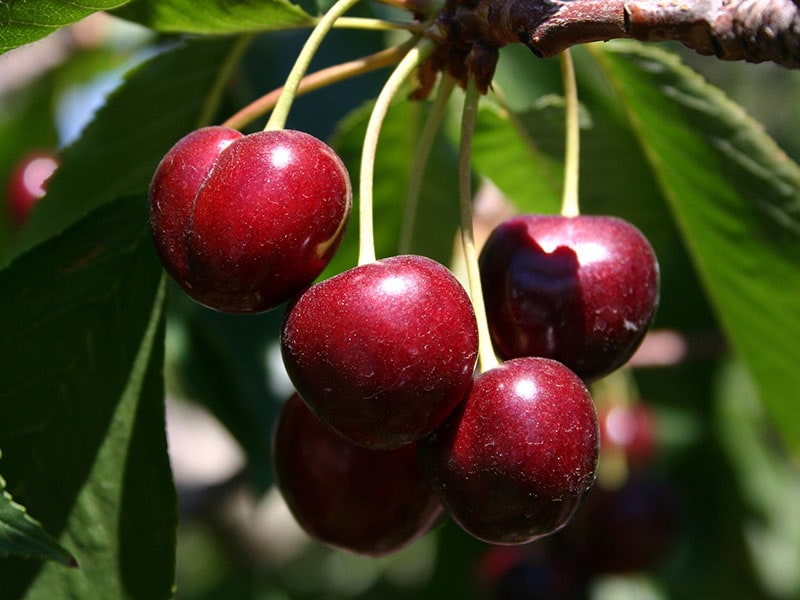
Bing cherries, first cultivated in Oregon, are beloved by fruit fans for their rich red color and plump, round shape. Their glossy exterior reveals a firm, meaty, and sweet flesh full of flavor.
The nutritional benefits of Bing cherries are worth noting, as they contain a lot of vitamins, minerals, and antioxidants. They’re high in vitamin C, potassium, and dietary fiber. Plus, the cherries’ deep red hue indicates the presence of anthocyanins, which possess powerful antioxidant properties.
Although Bing cherries are a specific variety, they share many characteristics with other cherry types, such as Rainier and Lambert. These cherries can be enjoyed fresh or used in various dishes, like pies and jams.
Bing cherries flourish during the summer months, with their peak season typically extending from June to August.
46. Black Cherry
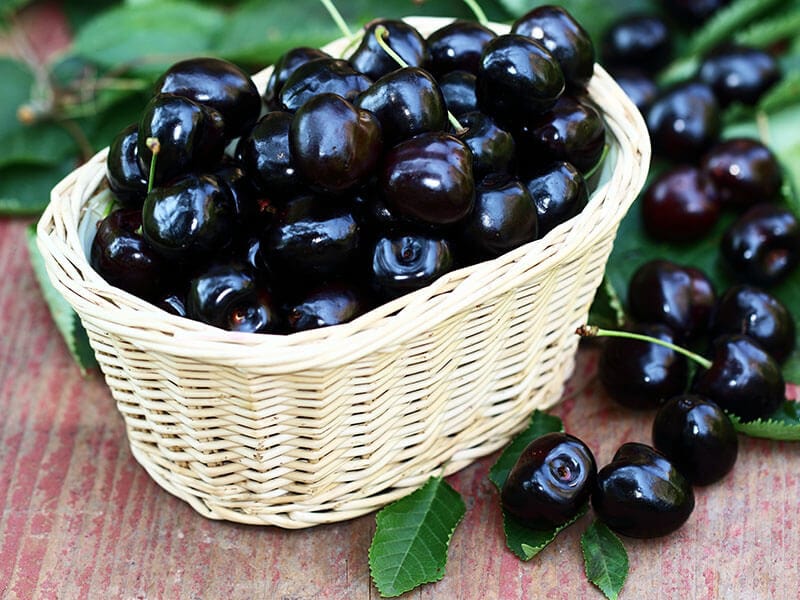
Black cherries (aka rum cherry) are luscious fruit with a deep, dark color and a sweet, rich flavor. Typically round or slightly heart-shaped, they vary in size but always make an enticing addition to a fruit bowl.
Their smooth, glossy skin hides a delectable, juicy flesh that promises to enthrall you with every bite. The texture of black cherries is a pleasing balance between firm and soft. And compared to other cherries, this one is sweeter than yellow or red ones.
Their versatility means they can be enjoyed in many ways, from being eaten fresh off the tree to starring in pies, jams, and smoothies.
One notable attribute of black cherries is their impressive nutritional profile. Rich in antioxidants, minerals, and vitamins, they offer numerous health benefits. The skin, in particular, contains potent antioxidants called anthocyanins, which help fight inflammation and promote overall well-being.
Black cherries are available during summer, making them a sought-after seasonal treat.
47. Bolwarra
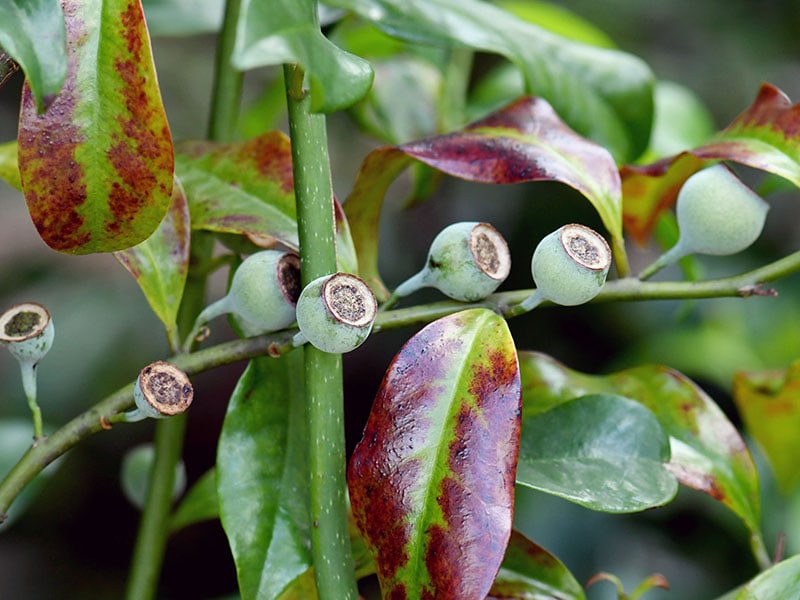
Bolwarra fruit deserves more recognition. Originating from Australia, this fruit’s green exterior may change to yellow as it ripens. Its shape is round or slightly oblong, with a modest size that makes it easy to hold in your hand.
You’ll find its texture firm and smooth. The flesh is somewhat similar to guava. When ripe, the flesh is edible with a jelly-like texture. When it comes to flavor, you’ll experience a mild sweetness and sourness with a light fragrance.
Similar to guava, bolwarra flesh is full of small seeds. They can act as guava substitutions in various recipes. Plus, they are perfect for making jams or desserts. Of course, you can eat them straight from the place if desired.
In some places, locals also dry bolwarra, then crush it to make a spice.
48. Bayberry
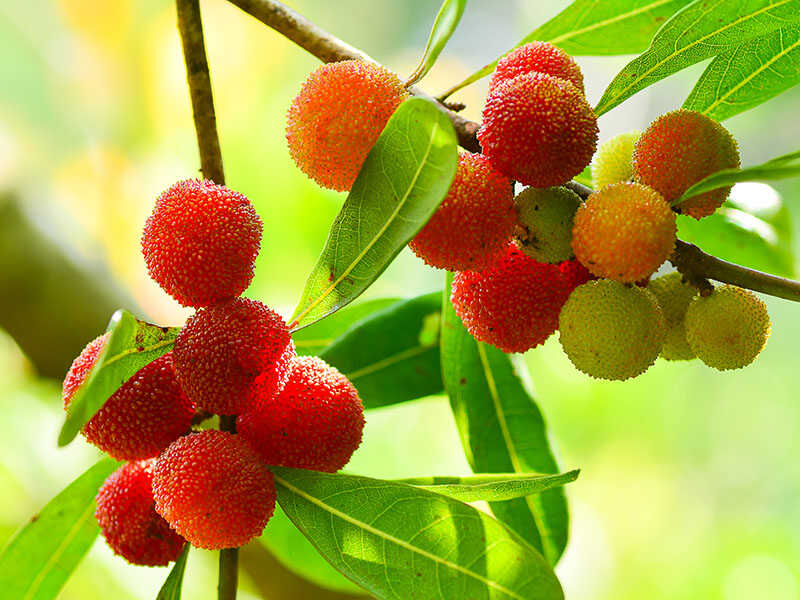
Bayberry captures attention with its vibrant red color, rough outer skin, and round shape. It is typically measured about 1/8 inch in diameter.
Bayberry has an alluring flavor, a blend of sweet and tart. The pulp is juicy, but be careful, as its juice can stain your hands or clothes if spilled. If you don’t want to eat them fresh, they are ideal for pickling, canning, or drying.
They have a hard seed in the middle that you need to discard when eating. Regarding health benefits, it’s a rich source of riboflavin, thiamine, carotene, and vitamins C, providing numerous health benefits. In China, bayberry is a well-loved fruit called yangmei.
49. Barhi Dates
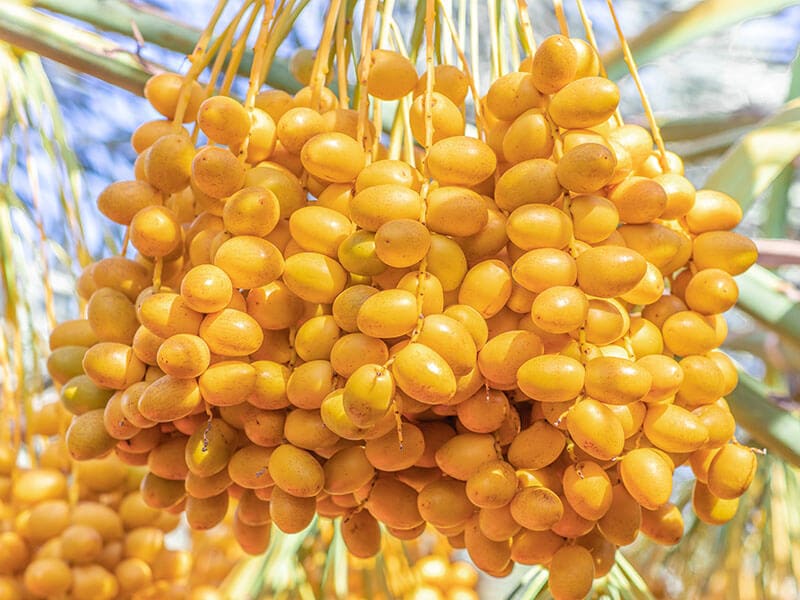
Barhi dates are a luscious and enticing fruit. These golden-colored jewels often boast a cylindrical shape, with sizes ranging from small to medium.
Hailing from the Middle East, specifically Iraq, these dates are now cultivated in various regions, such as California and North Africa.
This date variety owns a smooth and tender texture that’s irresistibly juicy with a rich, sweet, and caramel-like flavor.
Barhi dates come in various stages of ripeness, from khalal (crisp and sweet) to rutab (soft and moist). And this date is one of a few types that you can eat at the khalal stage.
Barhi dates are versatile and can be enjoyed in a multitude of ways. You can relish them in smoothies, desserts, or even savory dishes. They also make a fantastic snack on their own or paired with nuts and cheese.
Barhi dates are usually available from late summer to early fall. They can stay fresh in cool temperatures.
FAQs
Before wrapping up, let’s have a quick glance at these frequently asked questions for more information about awesome B-starting fruits.
B-Fruit Brilliance: Charting Your Course
You’ve explored a collection of fruits that start with B, each offering unique flavors, textures, and health benefits. Whether you prefer the tartness of blackcurrants or the sweetness of bananas, there’s a B-fruit to suit every palate.
I encourage you to experiment with these fruits and share your culinary adventures with friends and family. Some of them might be hard to find in your area, so whenever you spot them in other countries, don’t miss a chance to try them.
Also, a diverse and balanced diet is key to maintaining good health, and these fruits can play a significant role in achieving that goal.
Did you find this guide helpful? Do you have a favorite B-fruit recipe or tip to share? I’d love to hear from you! Please leave a comment, like, or share this article with others who might find it useful. Let’s spread the word about the fantastic world of B-fruits!
References
- Wikipedia 2023. Blackcurrant production in the United States.
- Extension.msstate.edu 2021. What is the Difference Between Green, Red, and Yellow Bell Peppers?.
- oneearth.org 2022. African Baobab tree: how one plant creates an entire habitat.
- growables.org 2023. Cherapu, Button Mangosteen – Garcinia prainiana.
- hsph.harvard.edu 2023. Banana.

